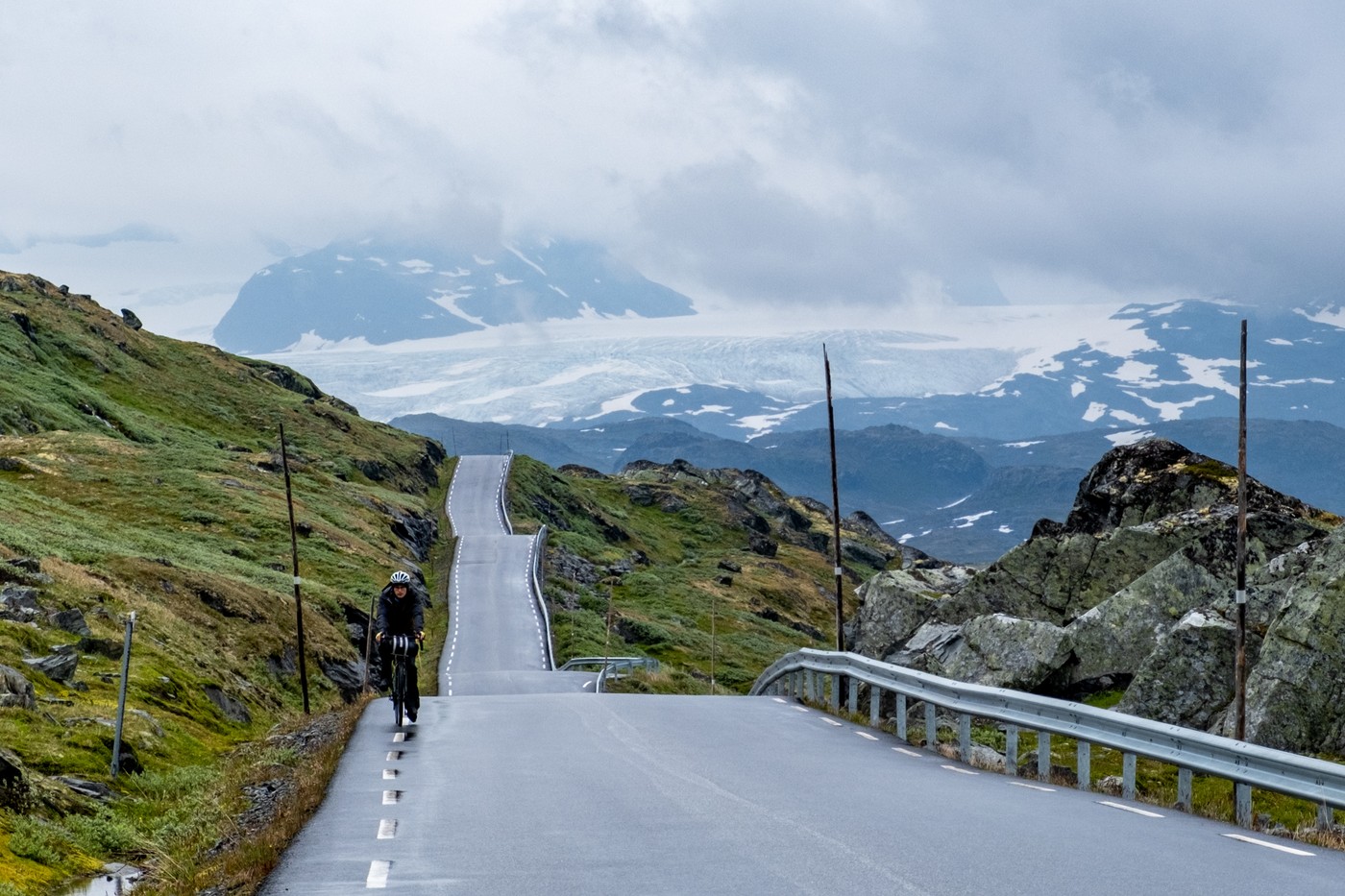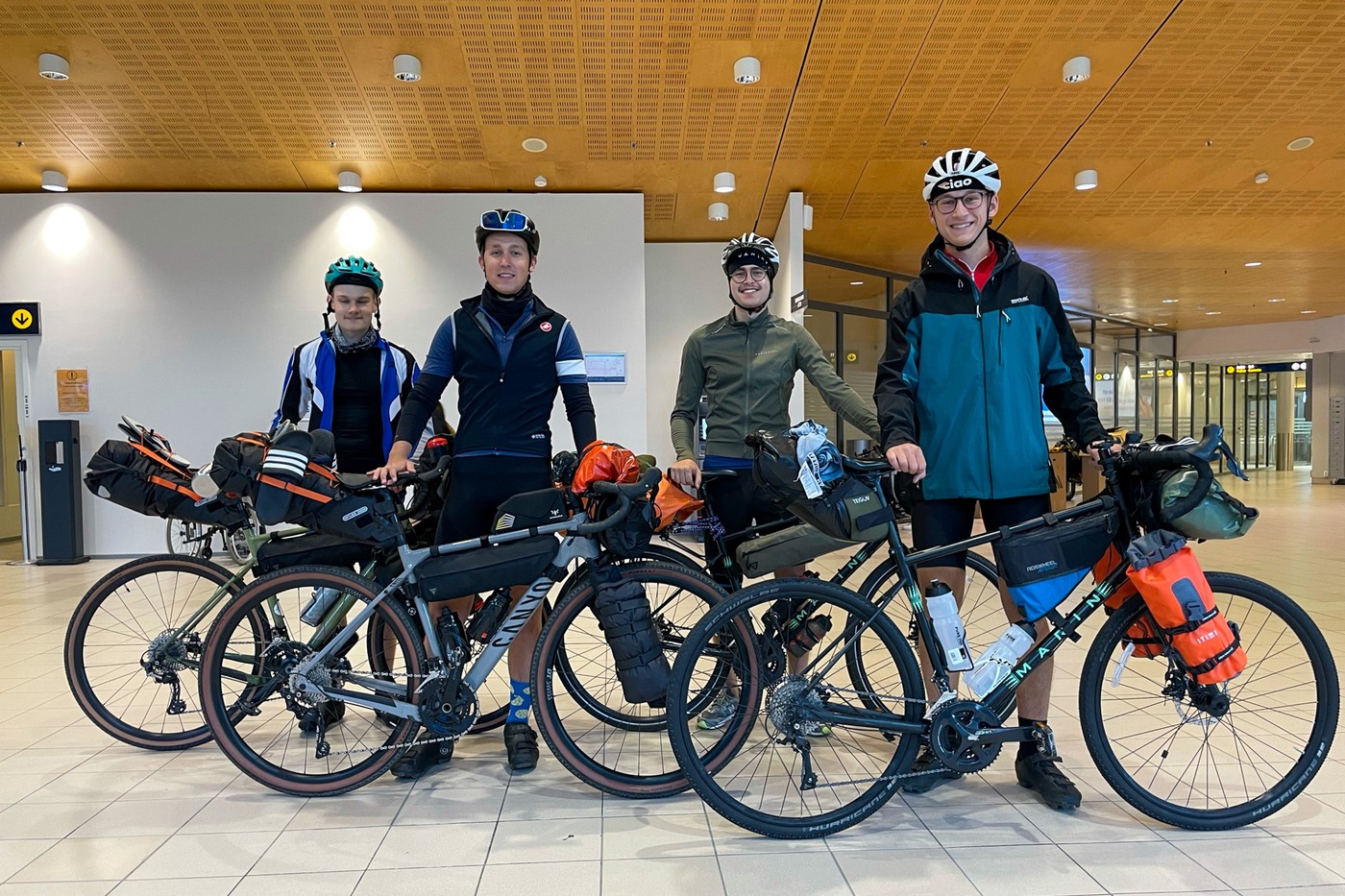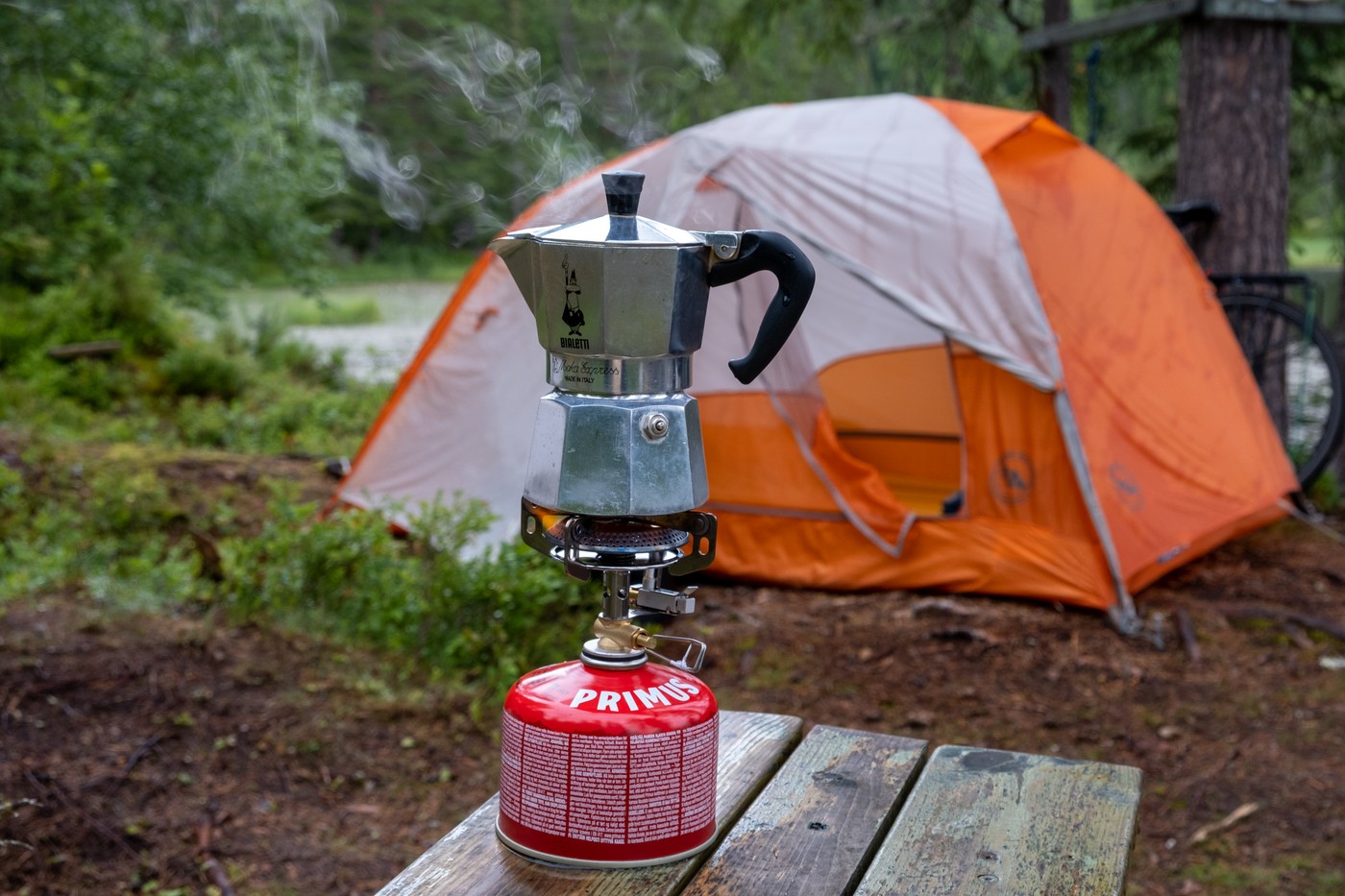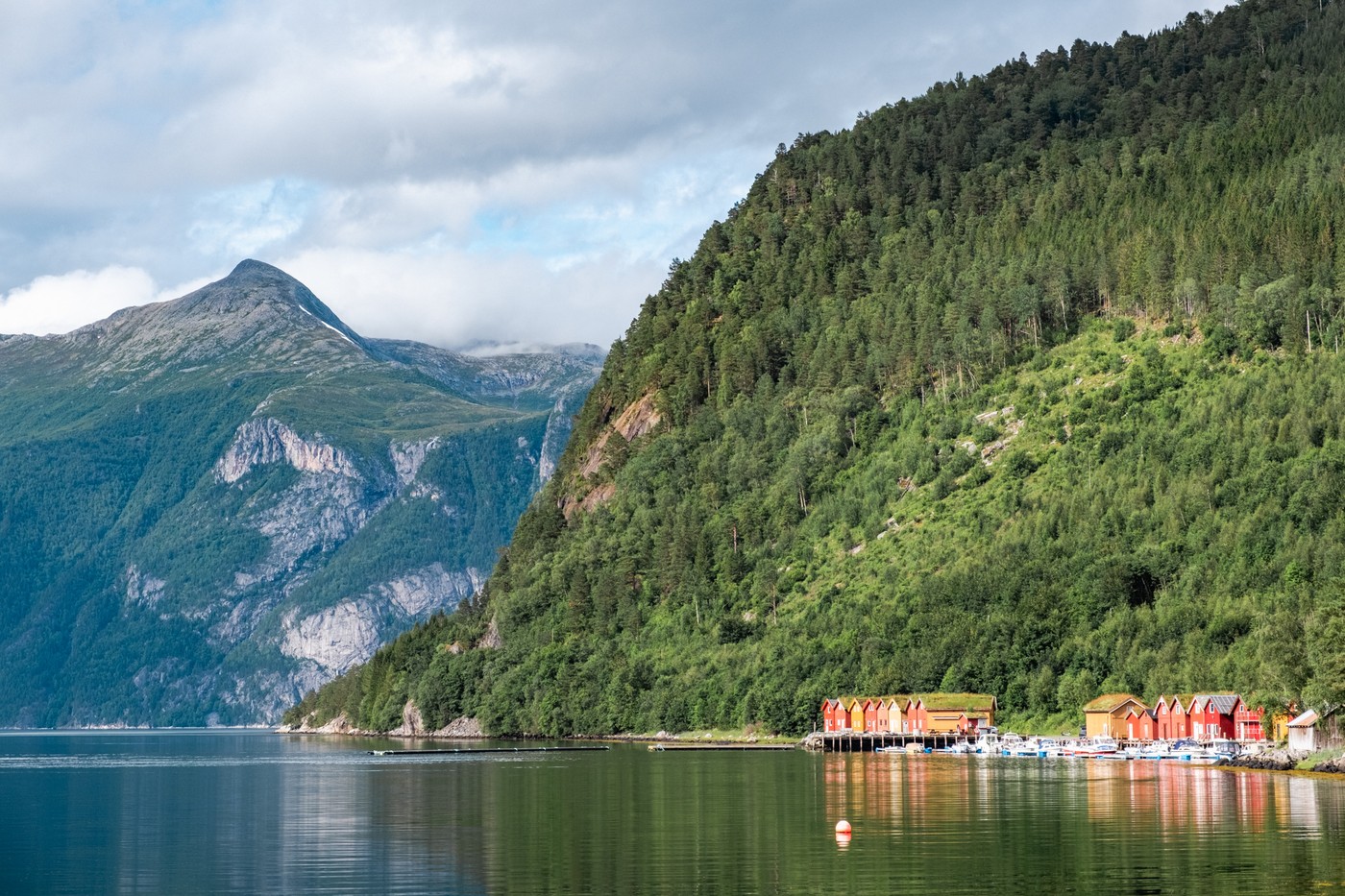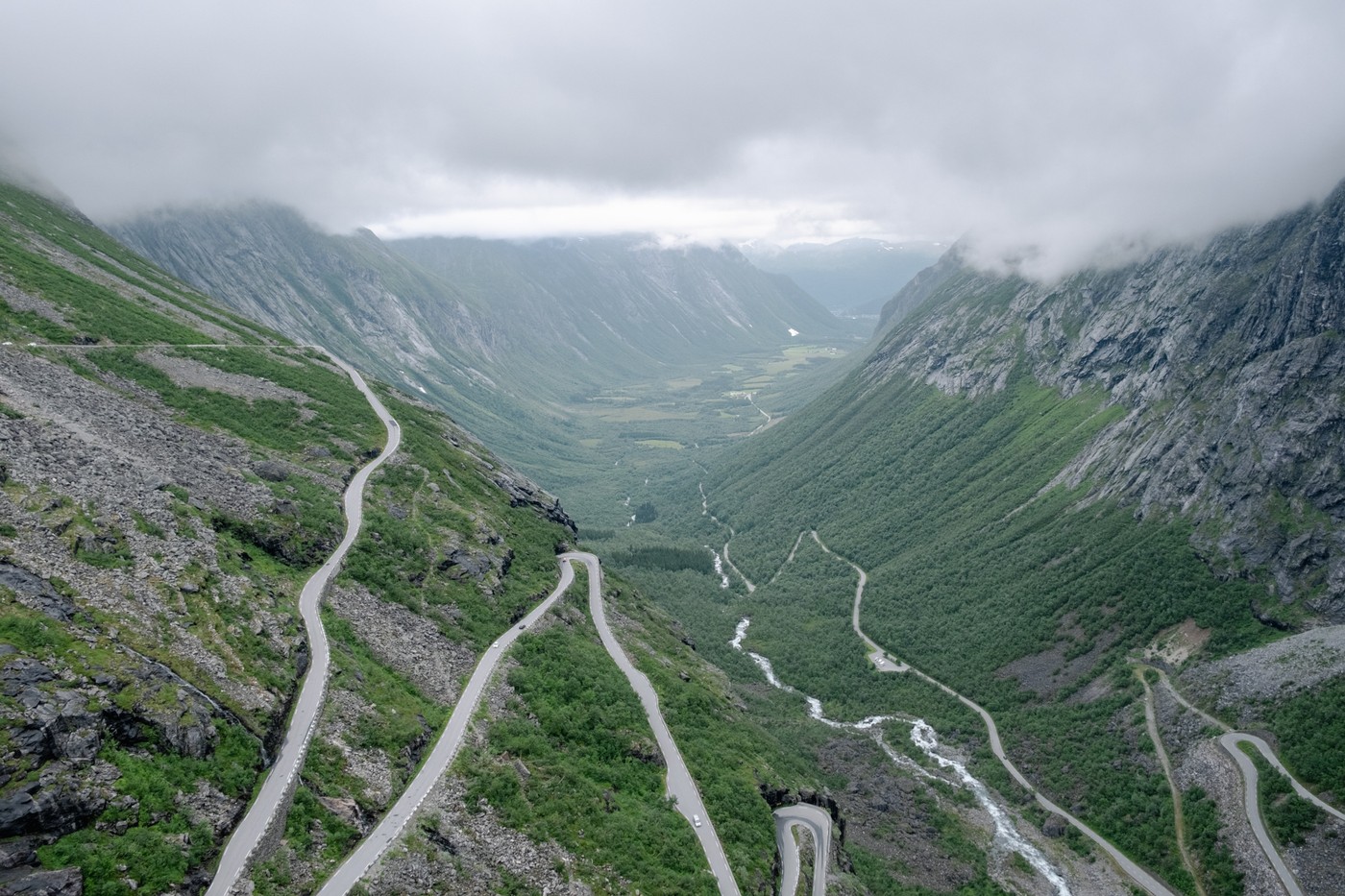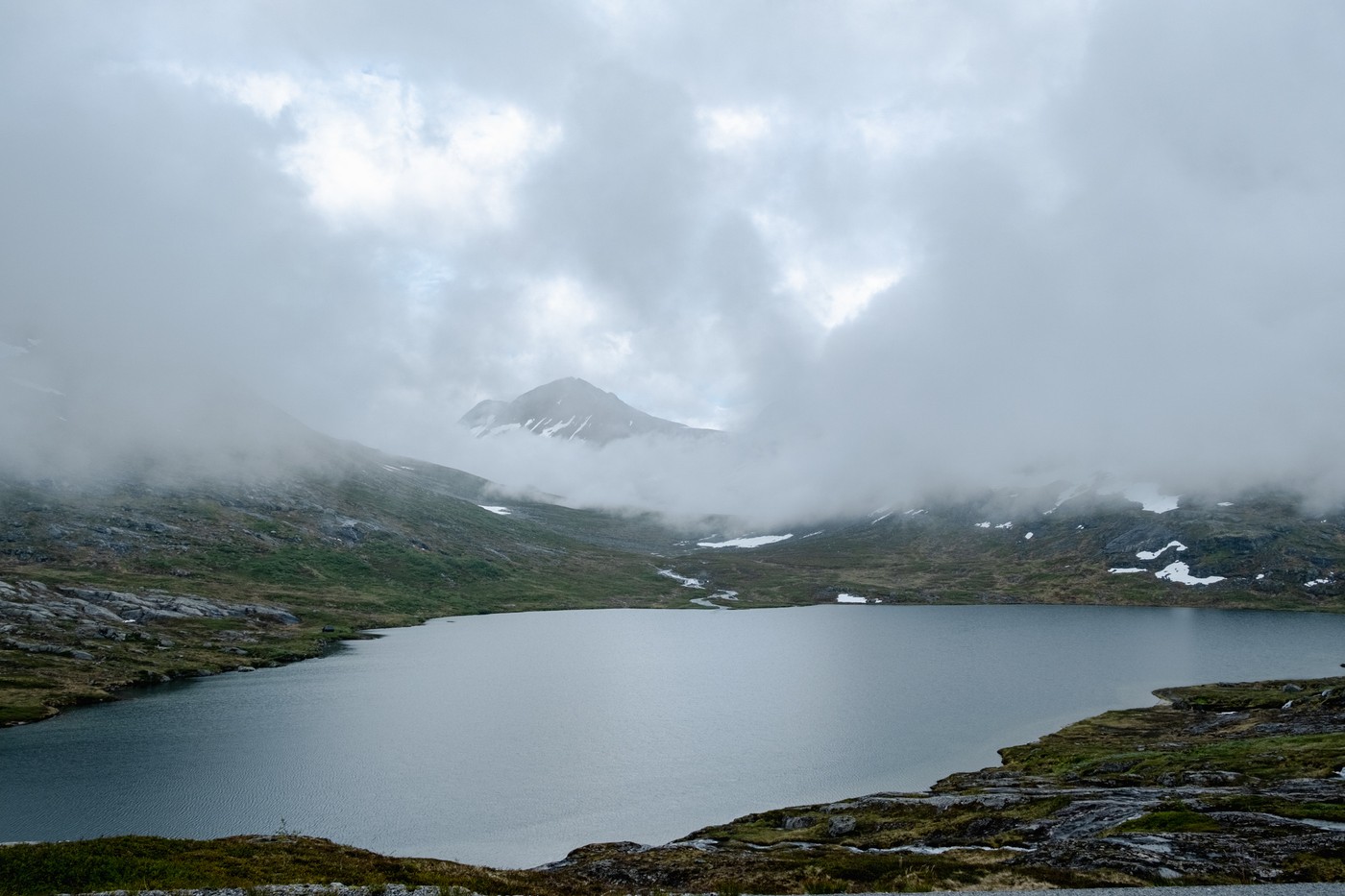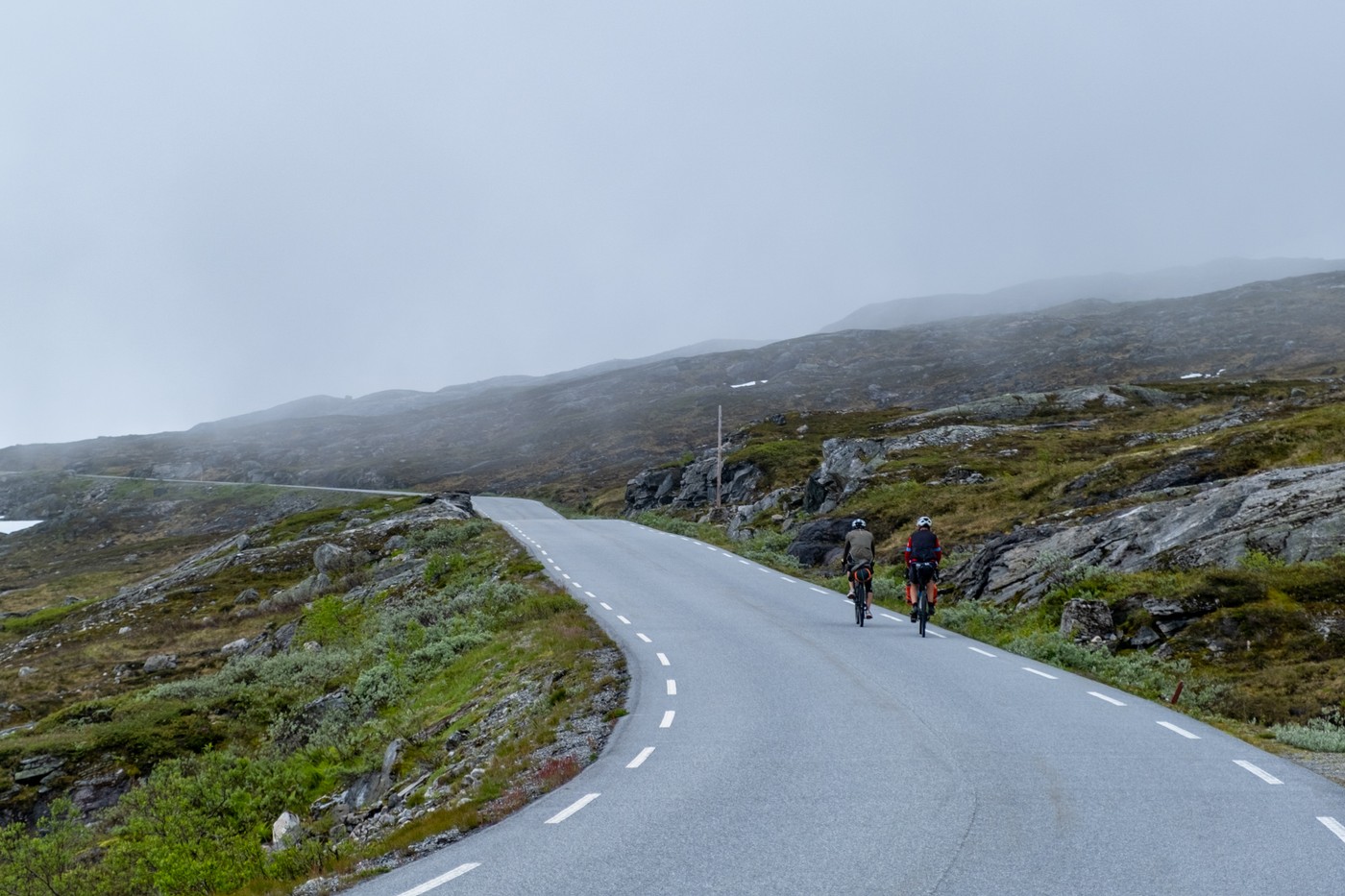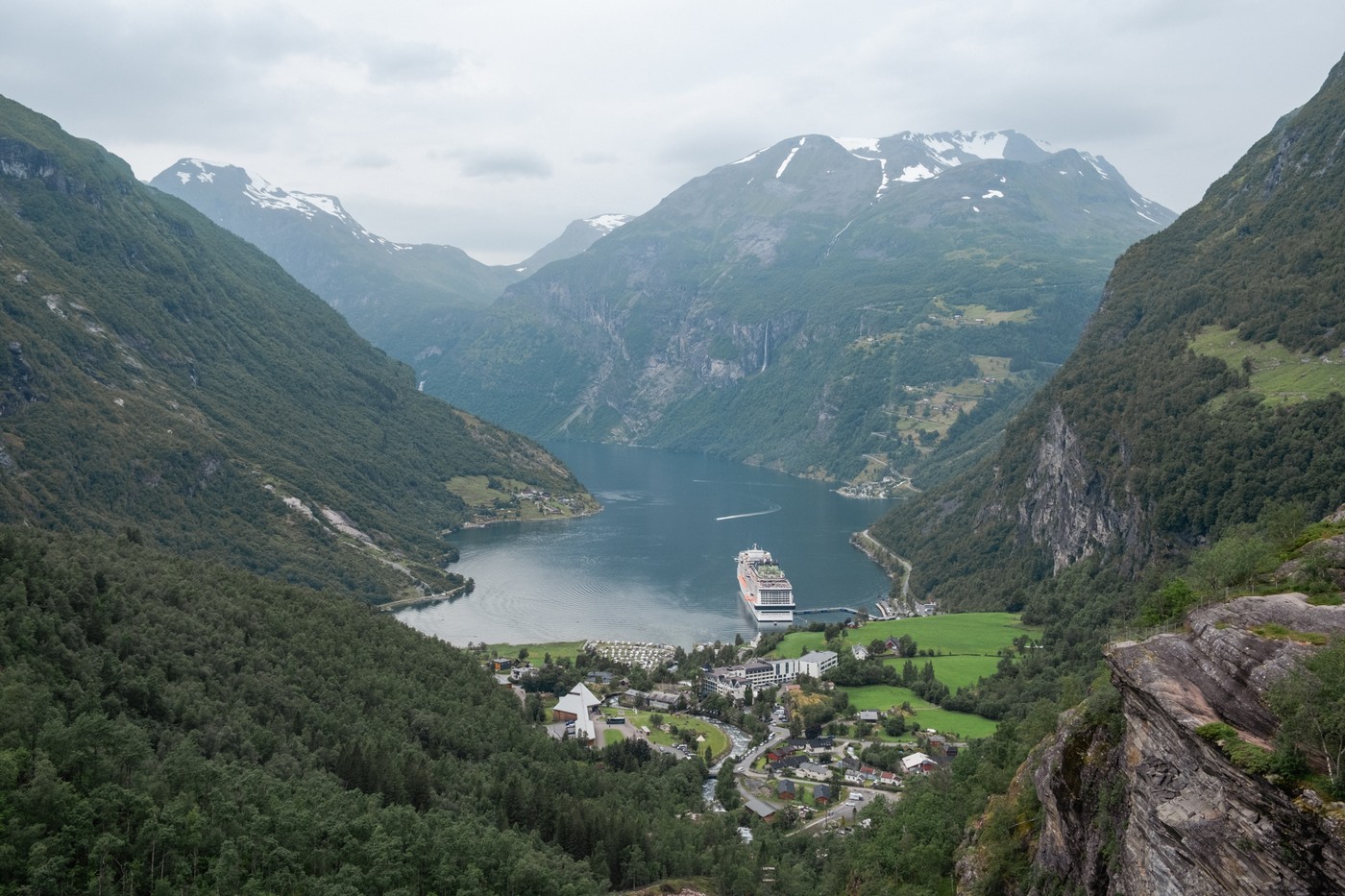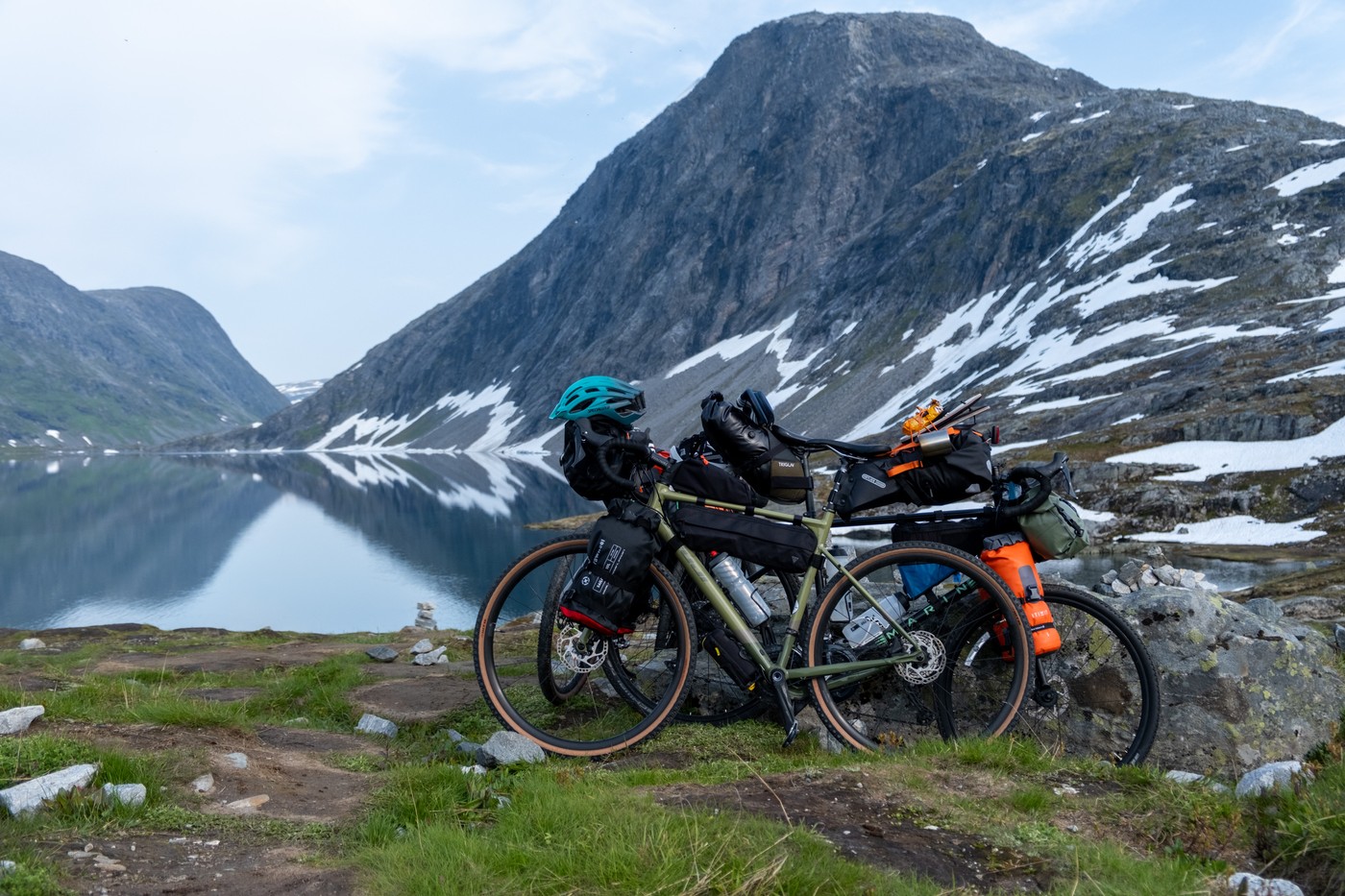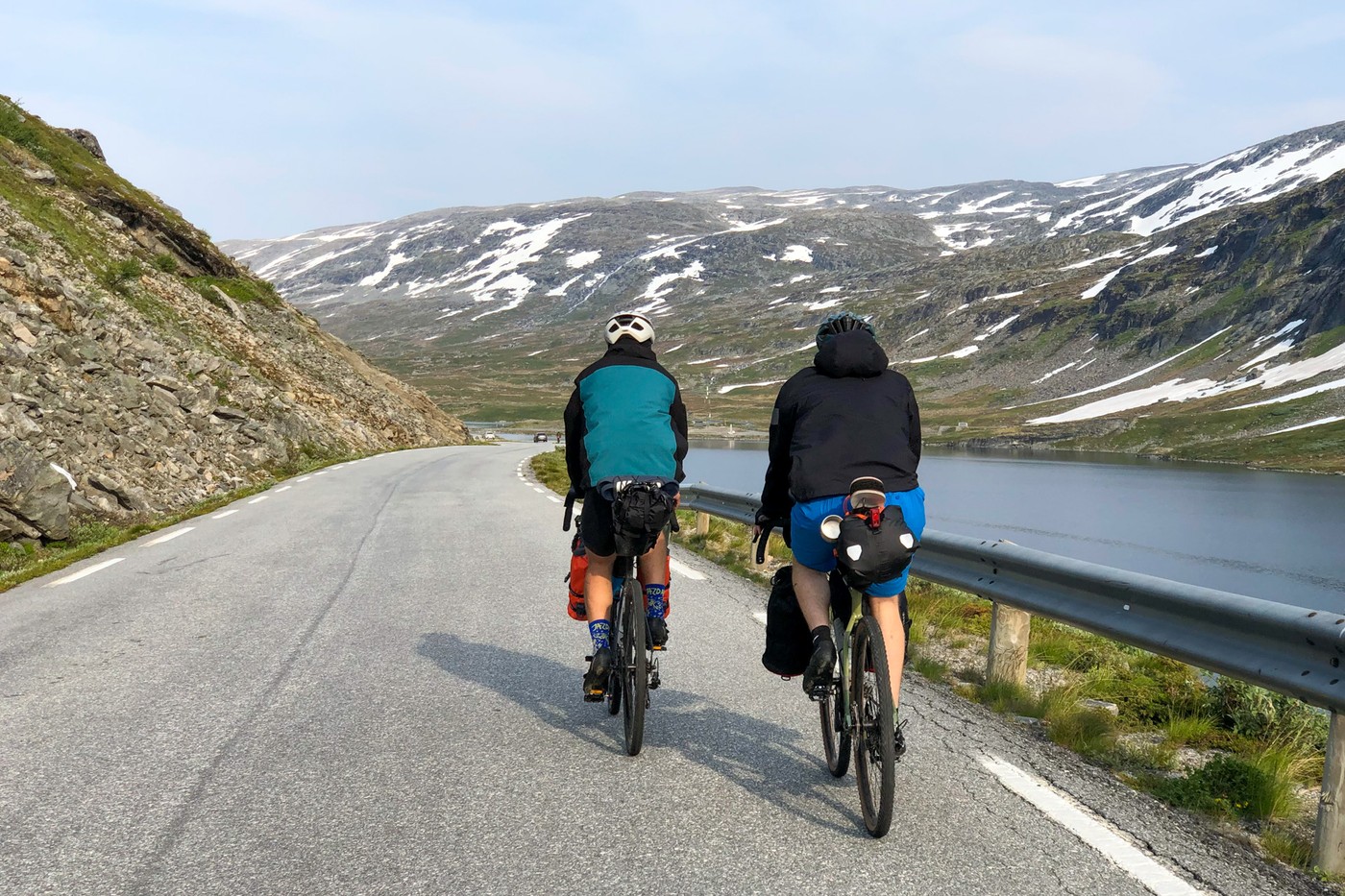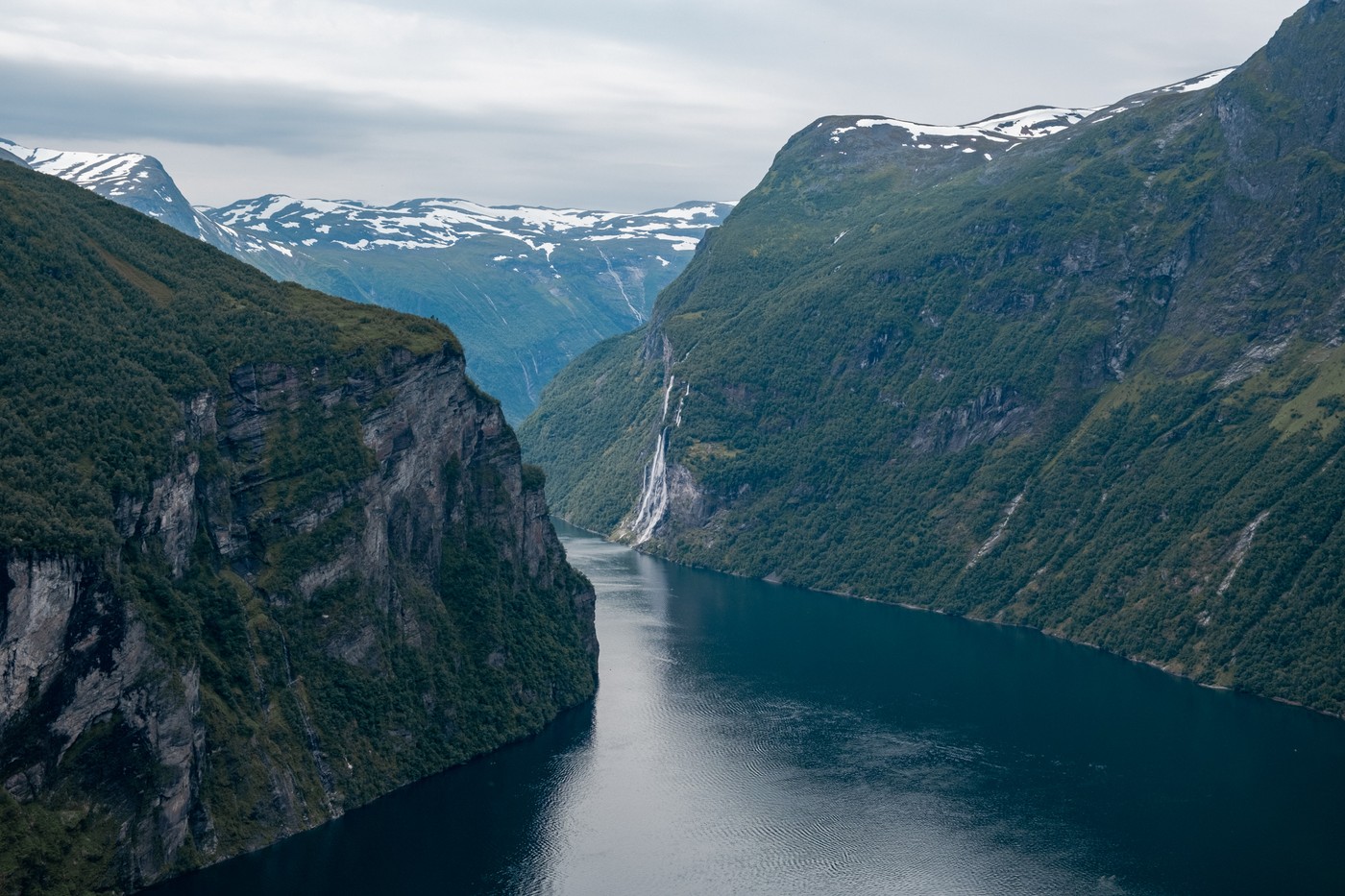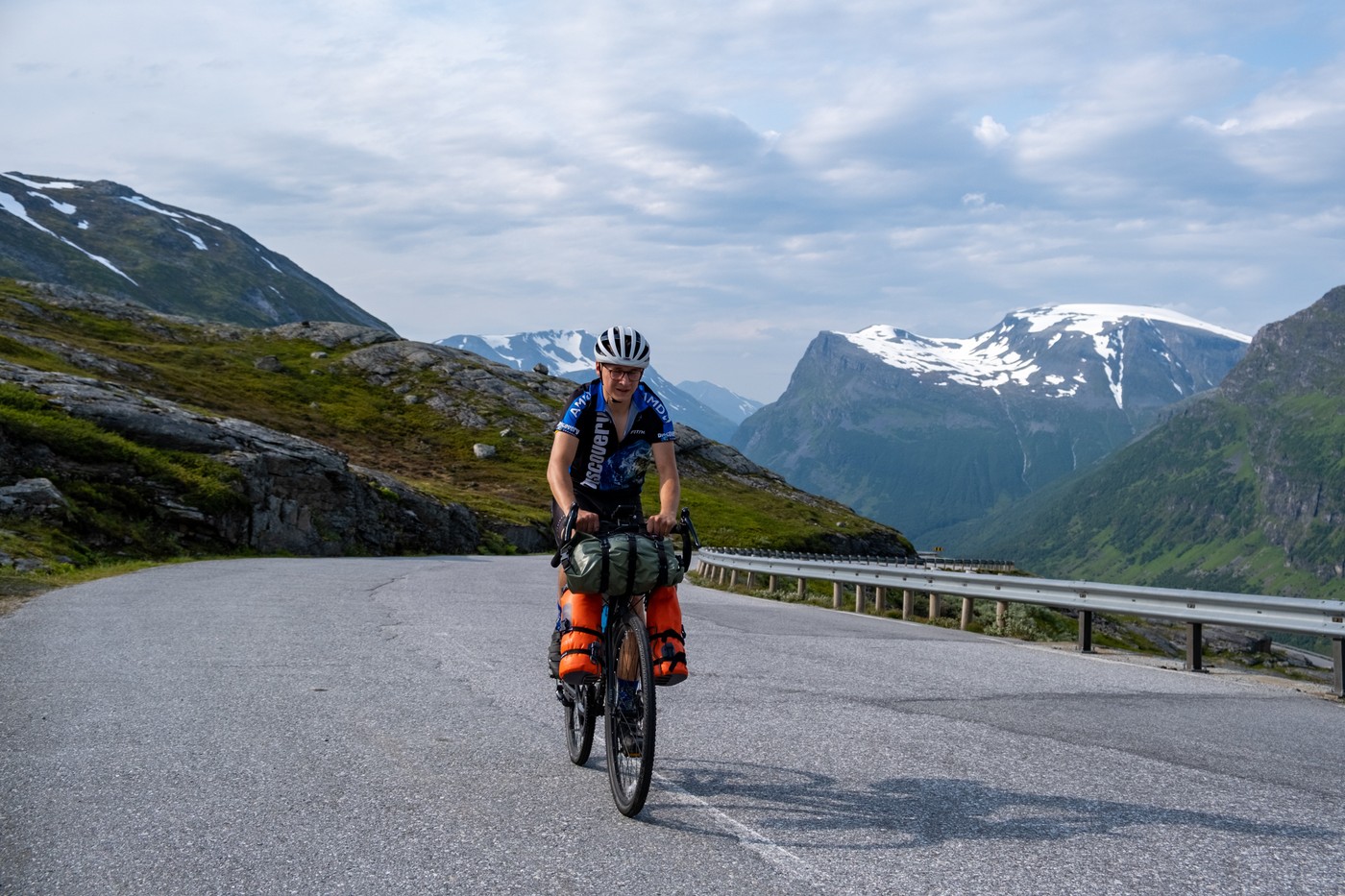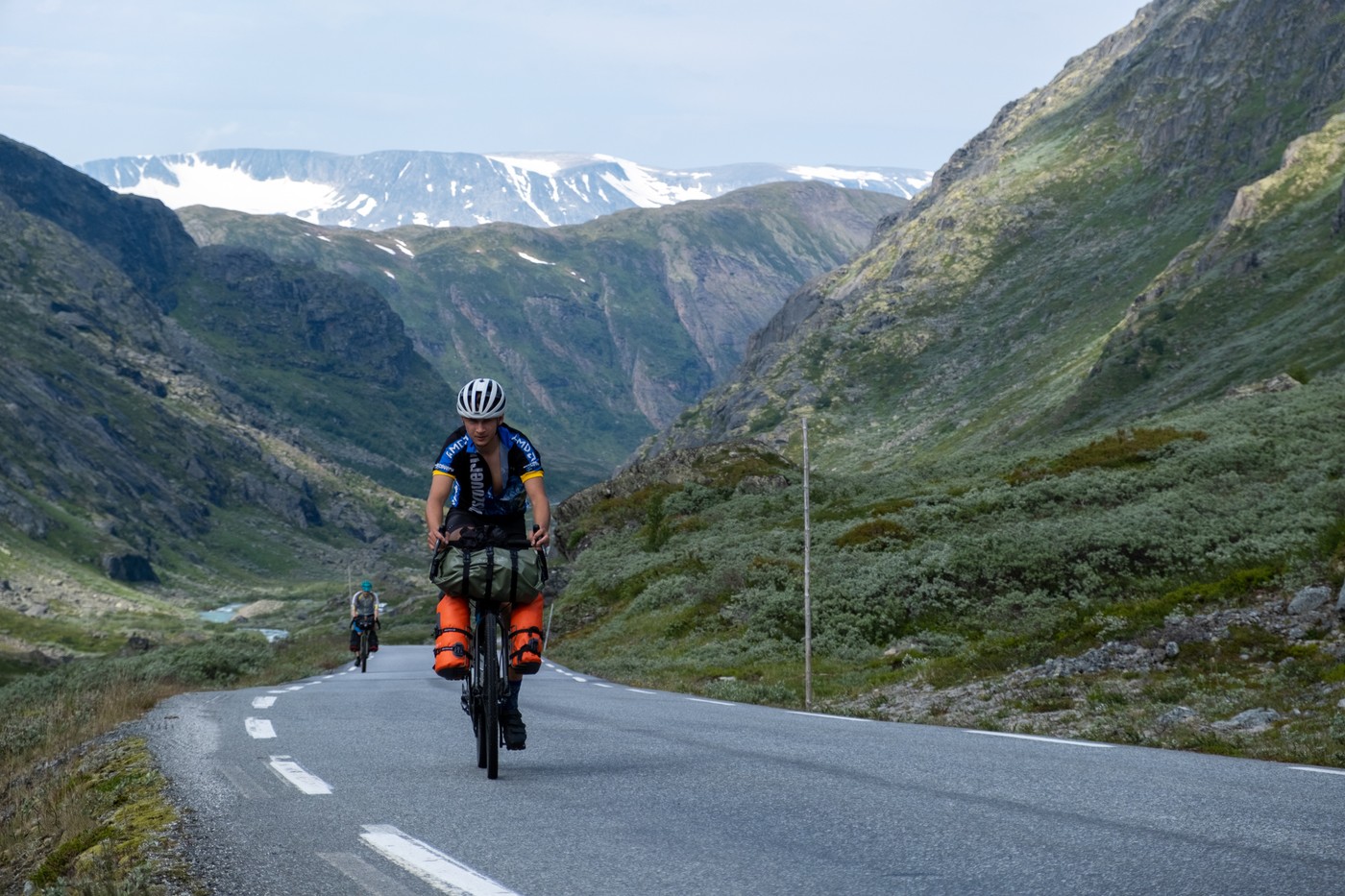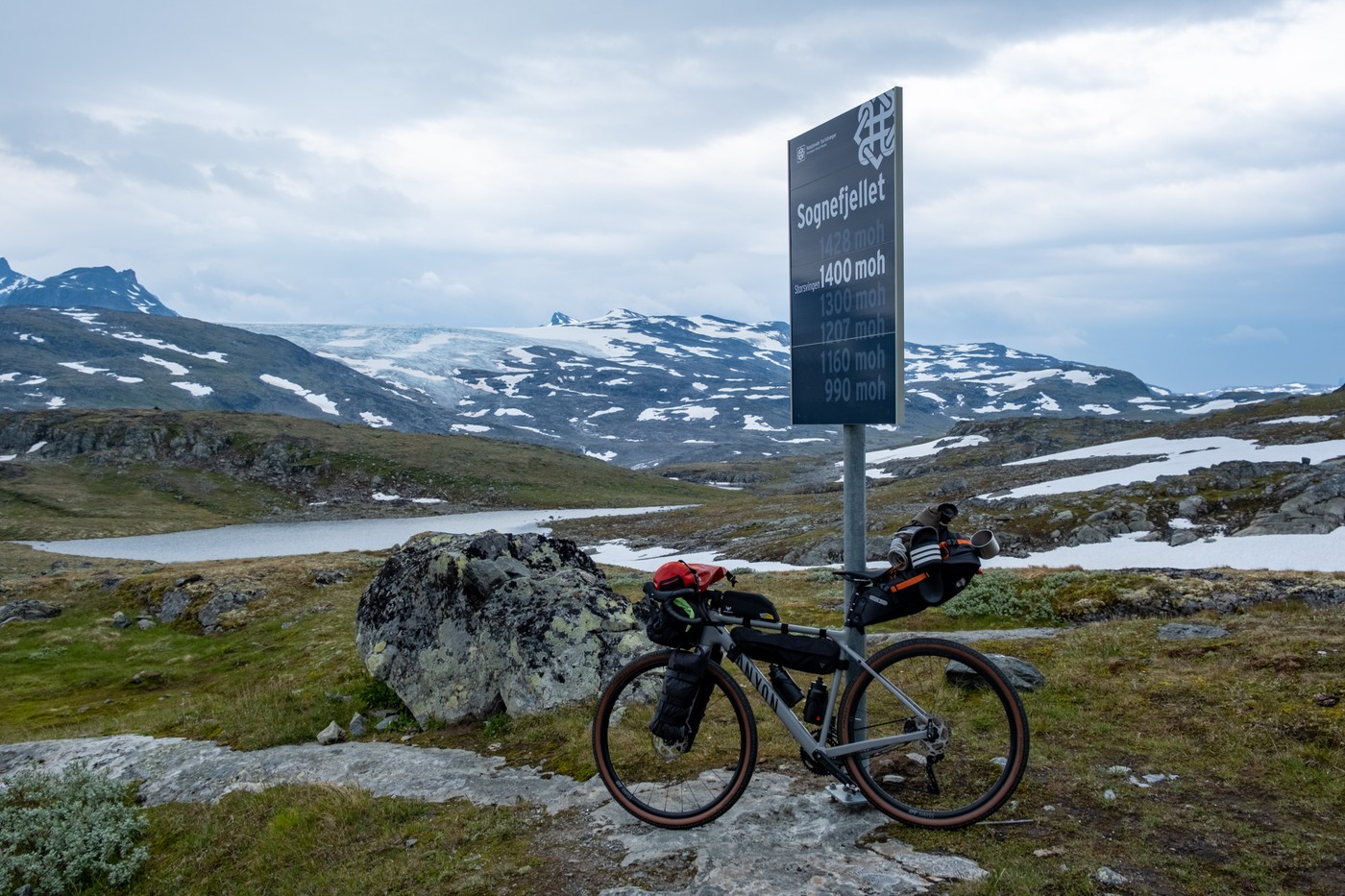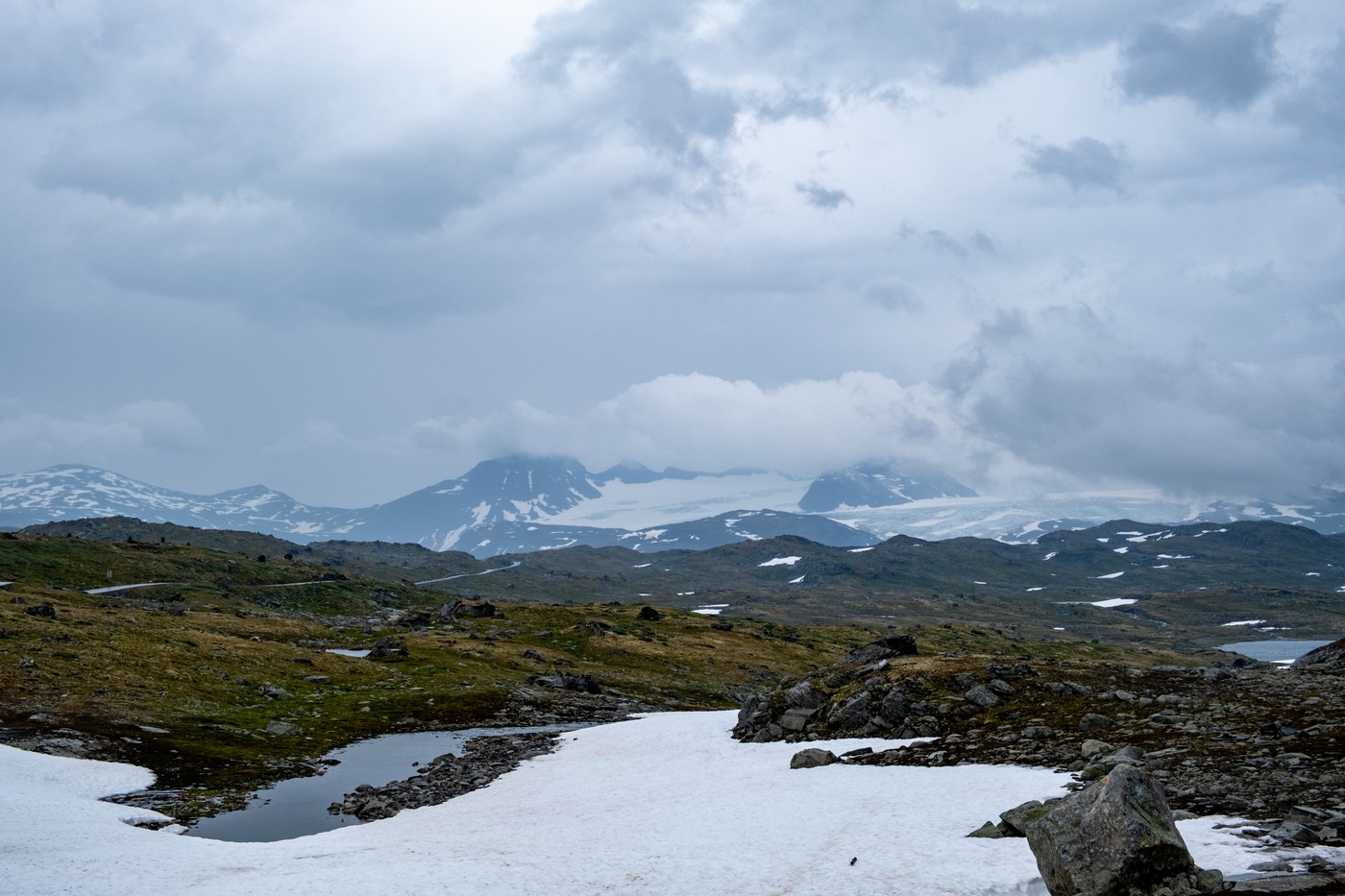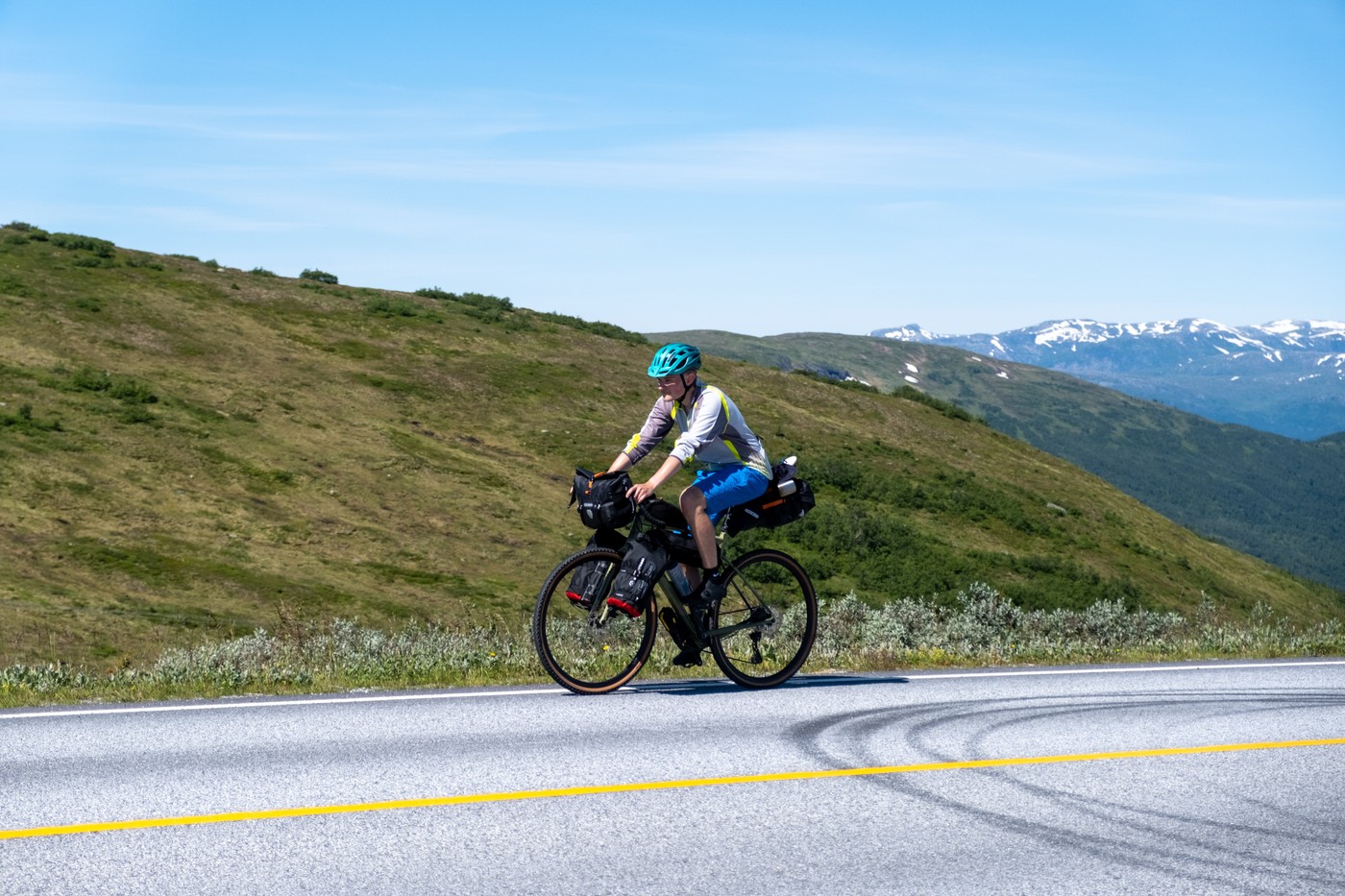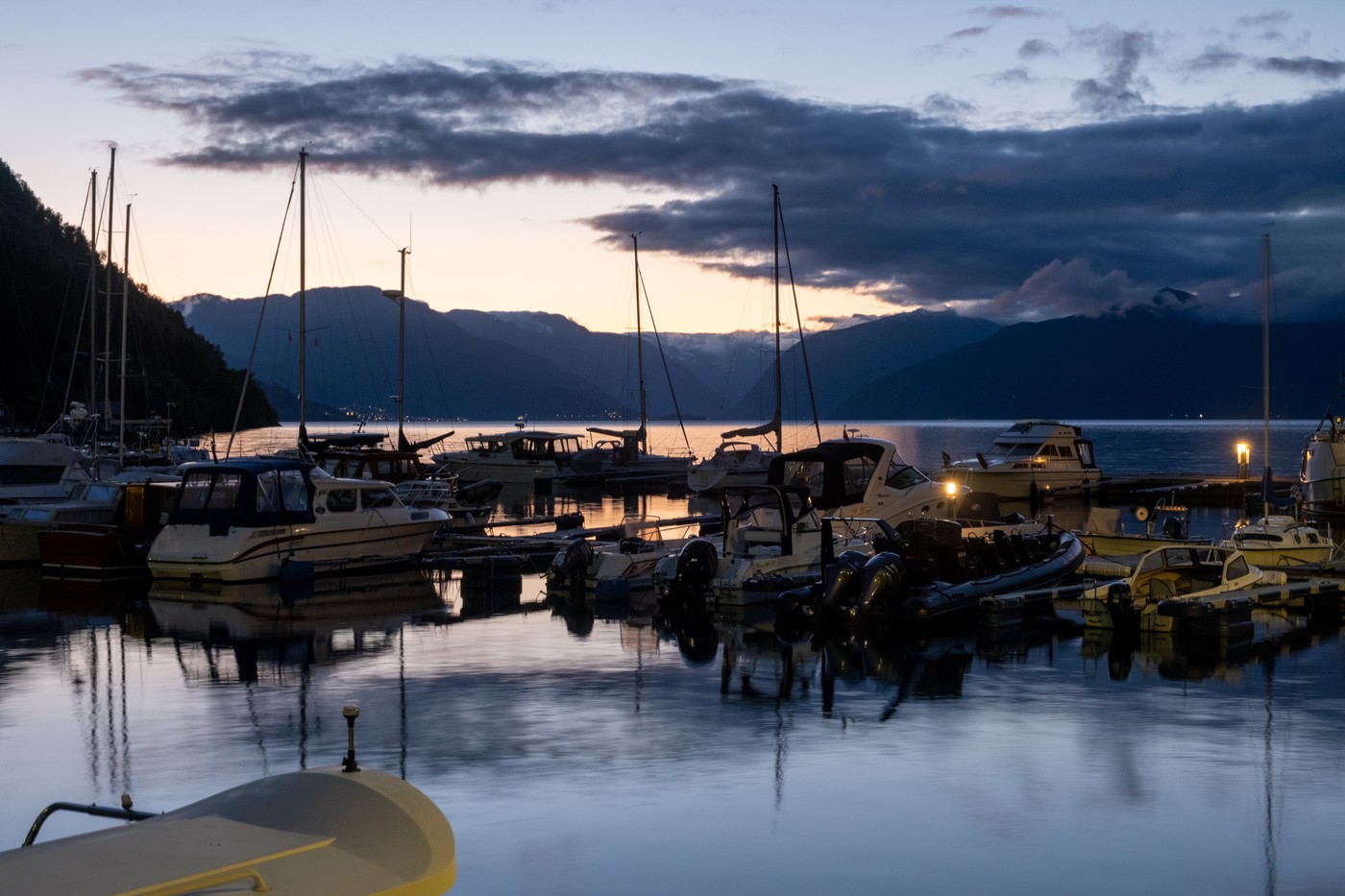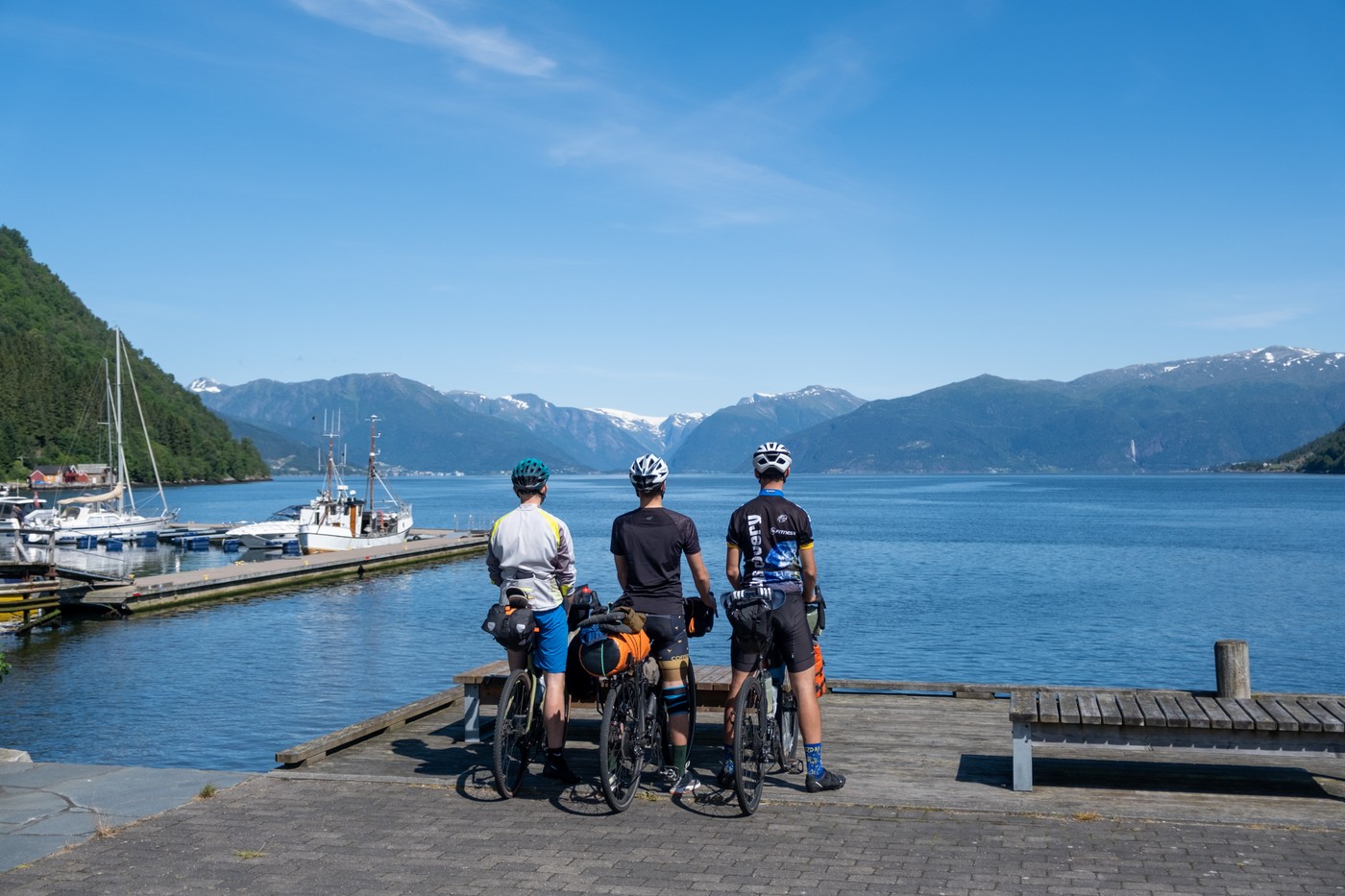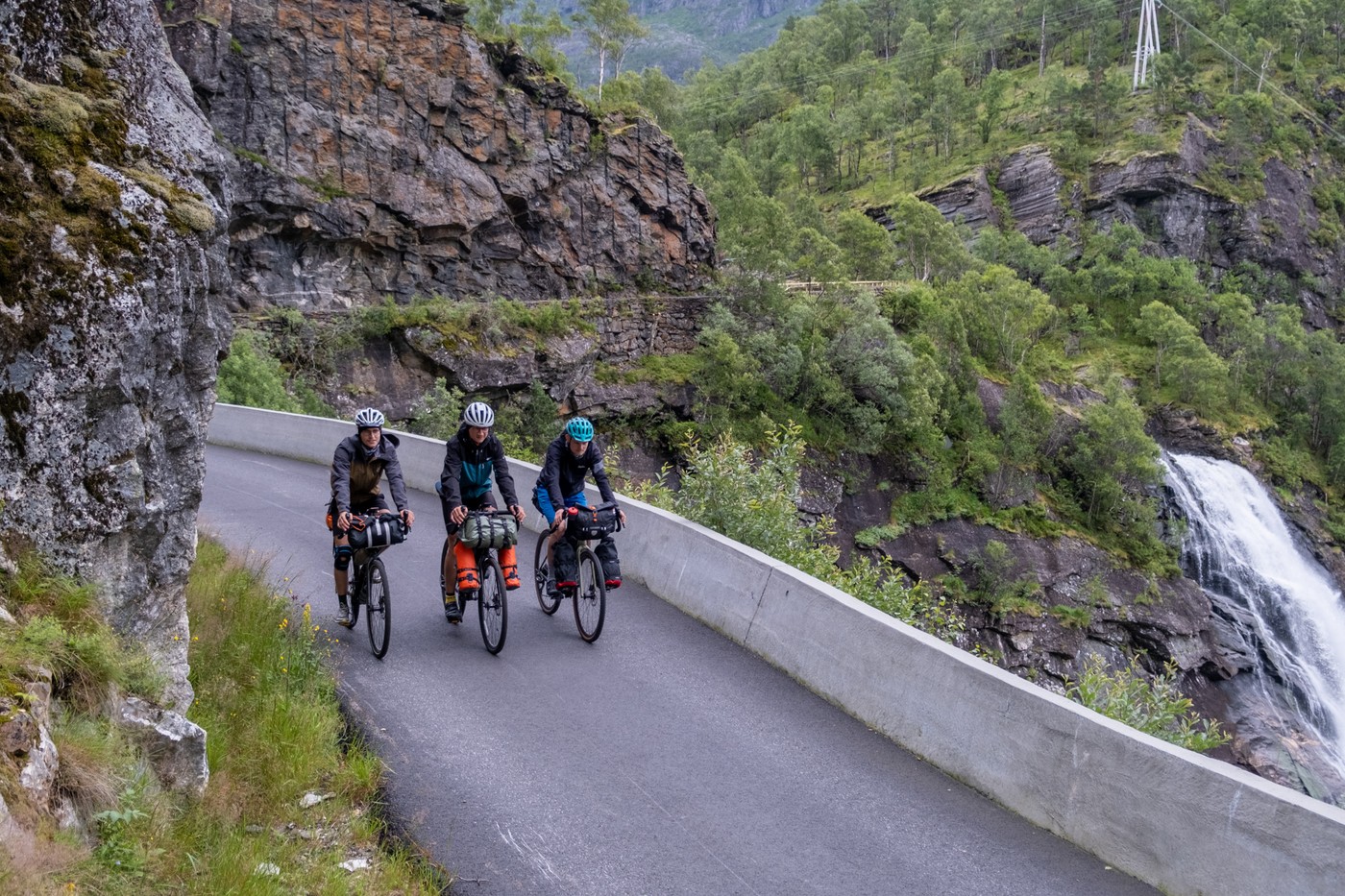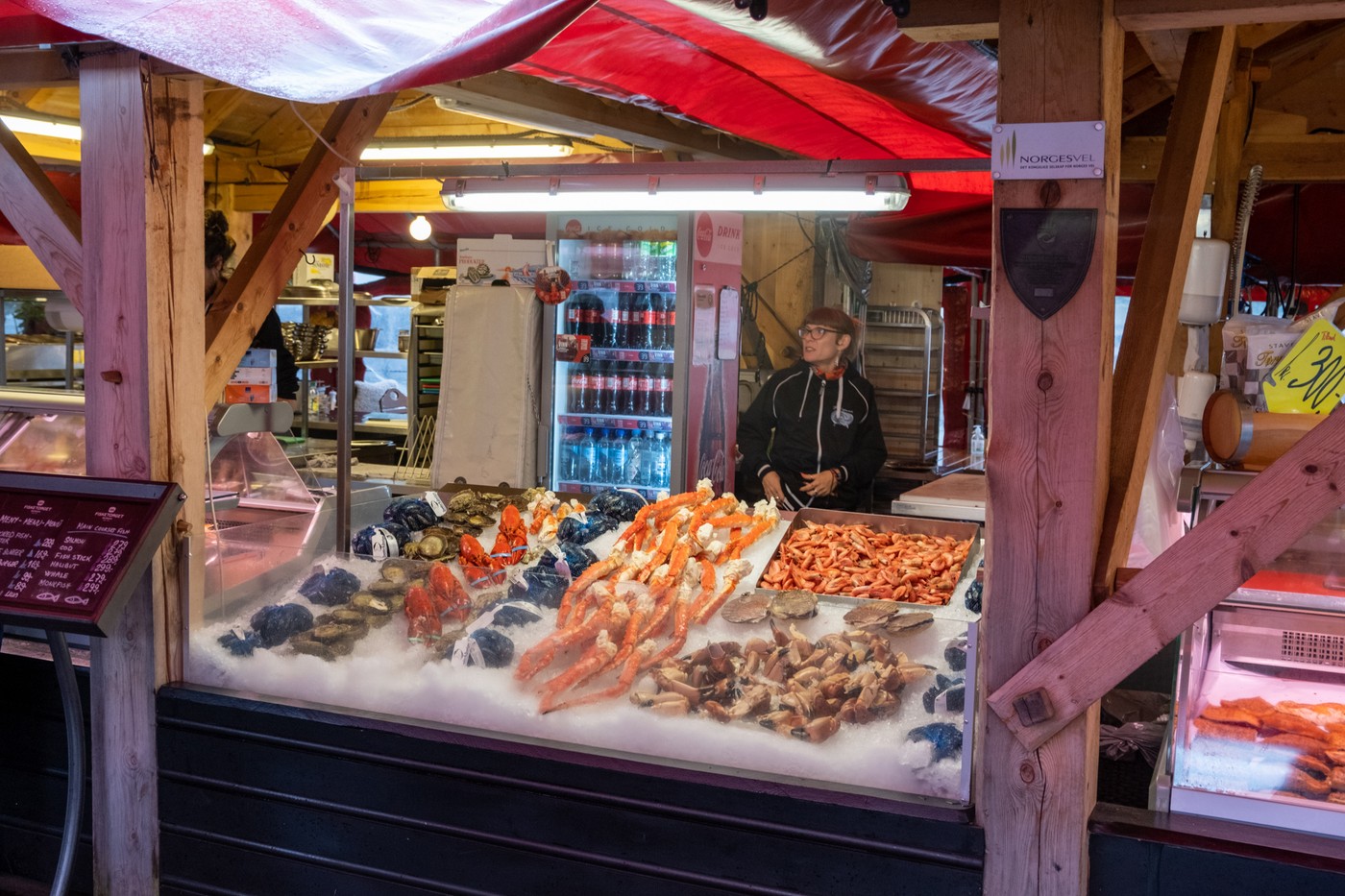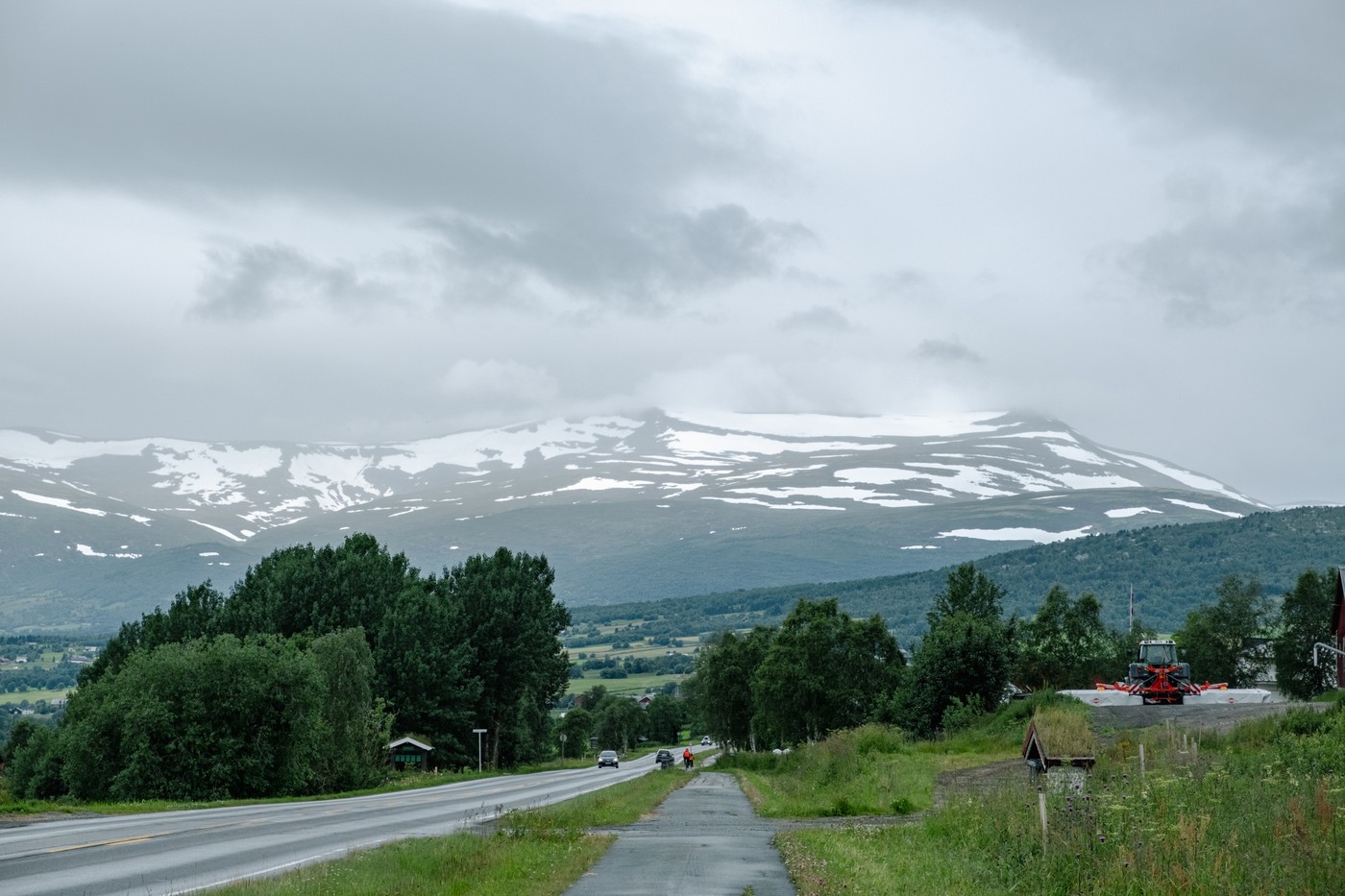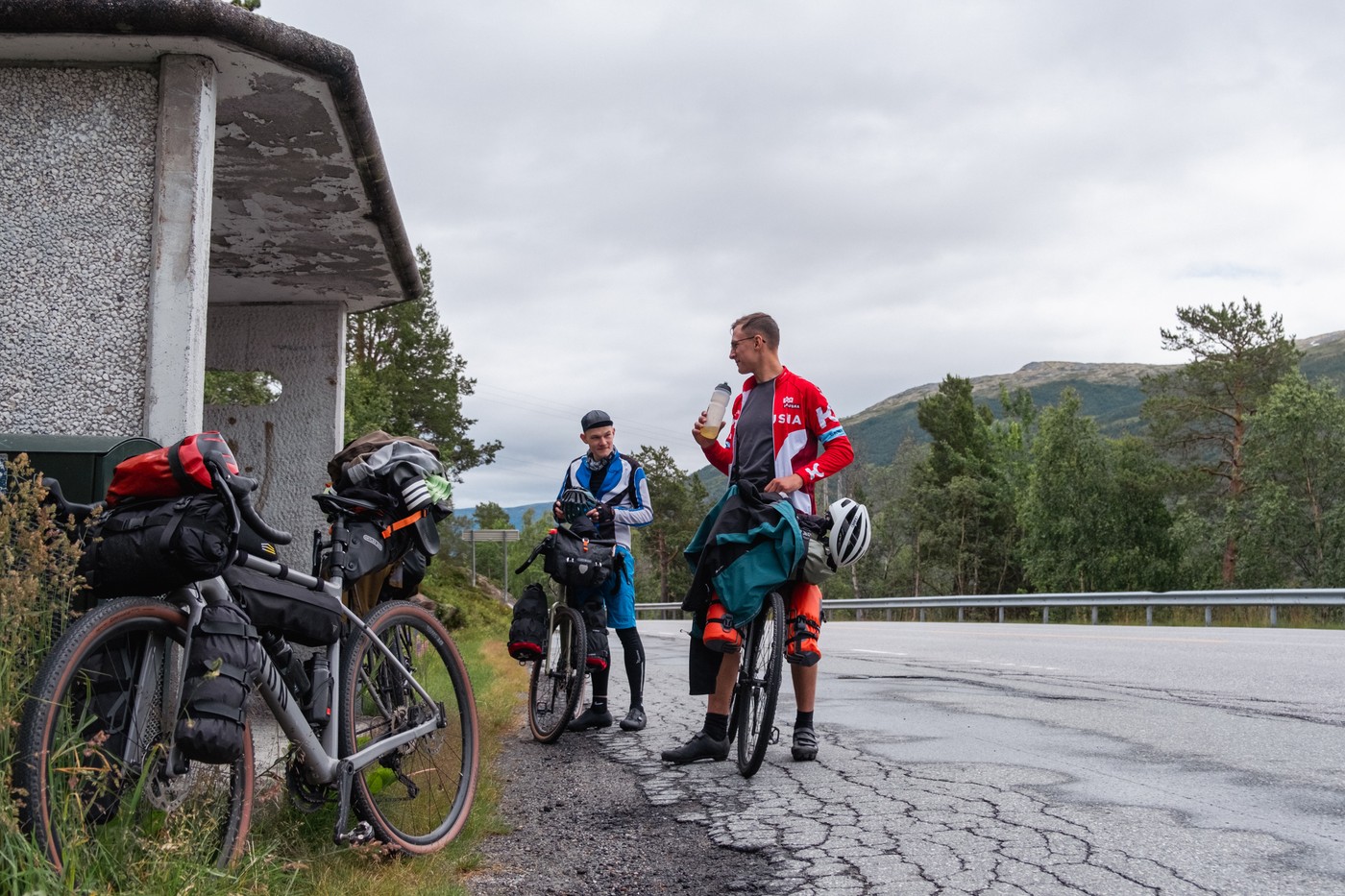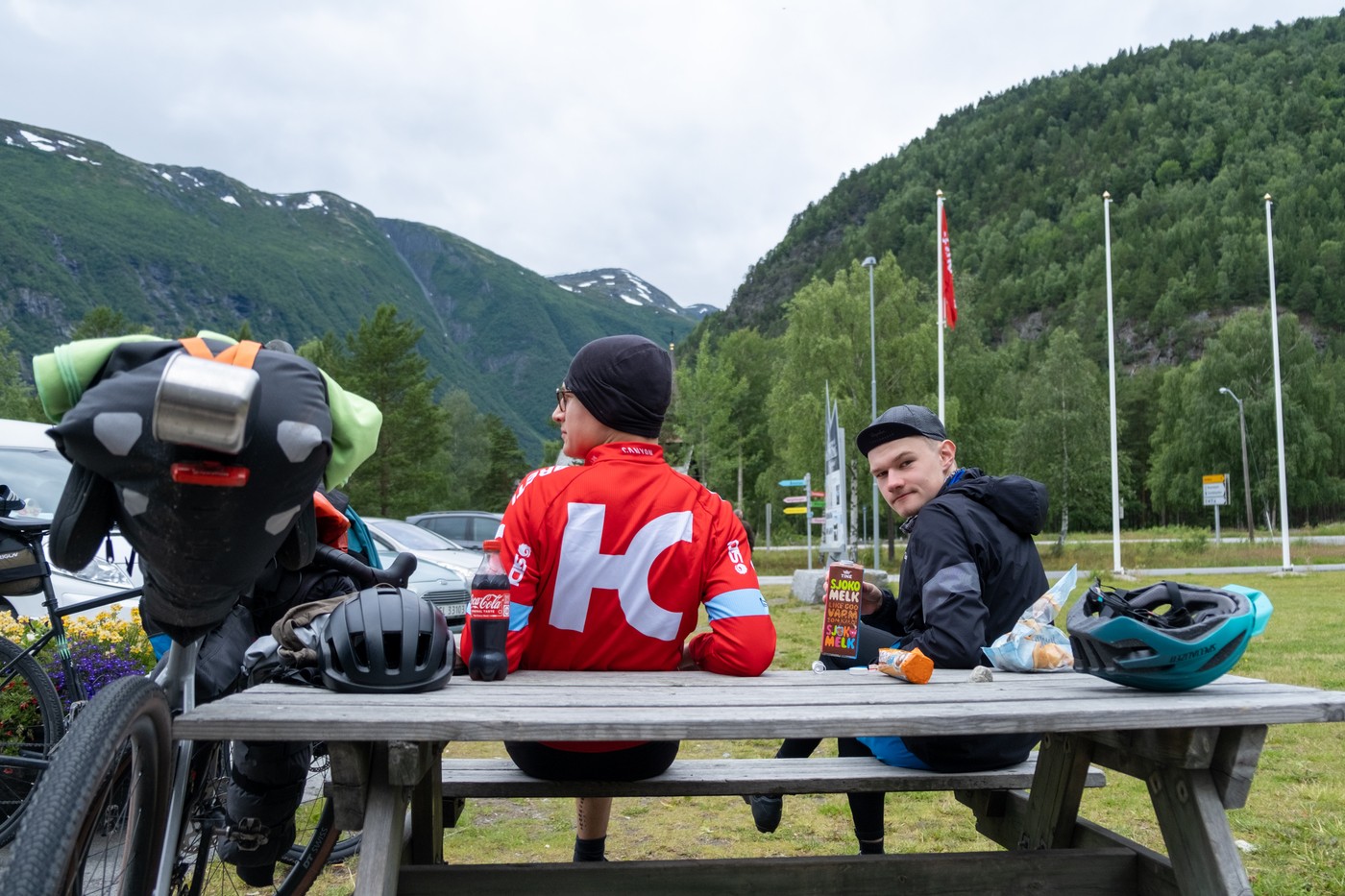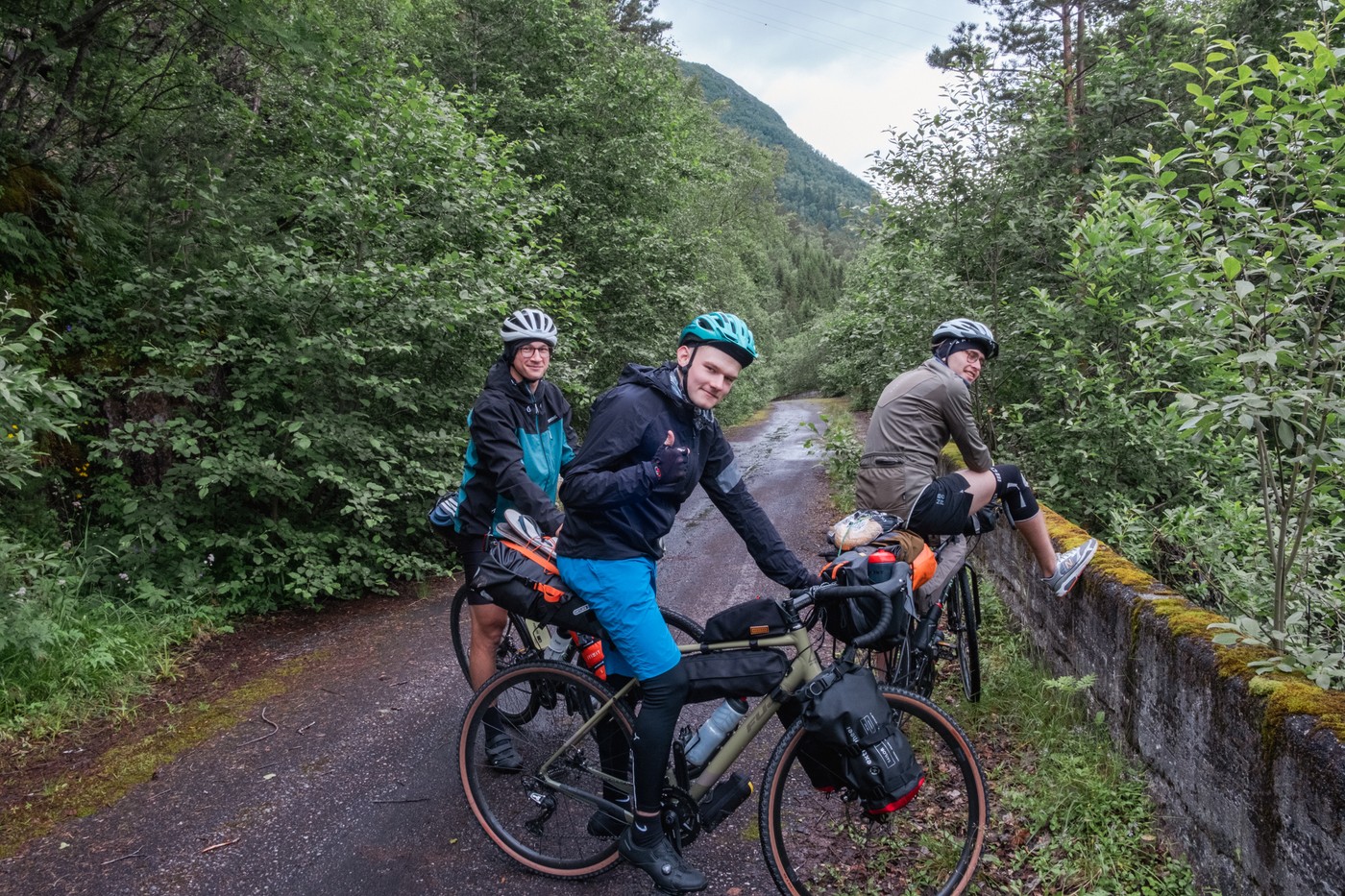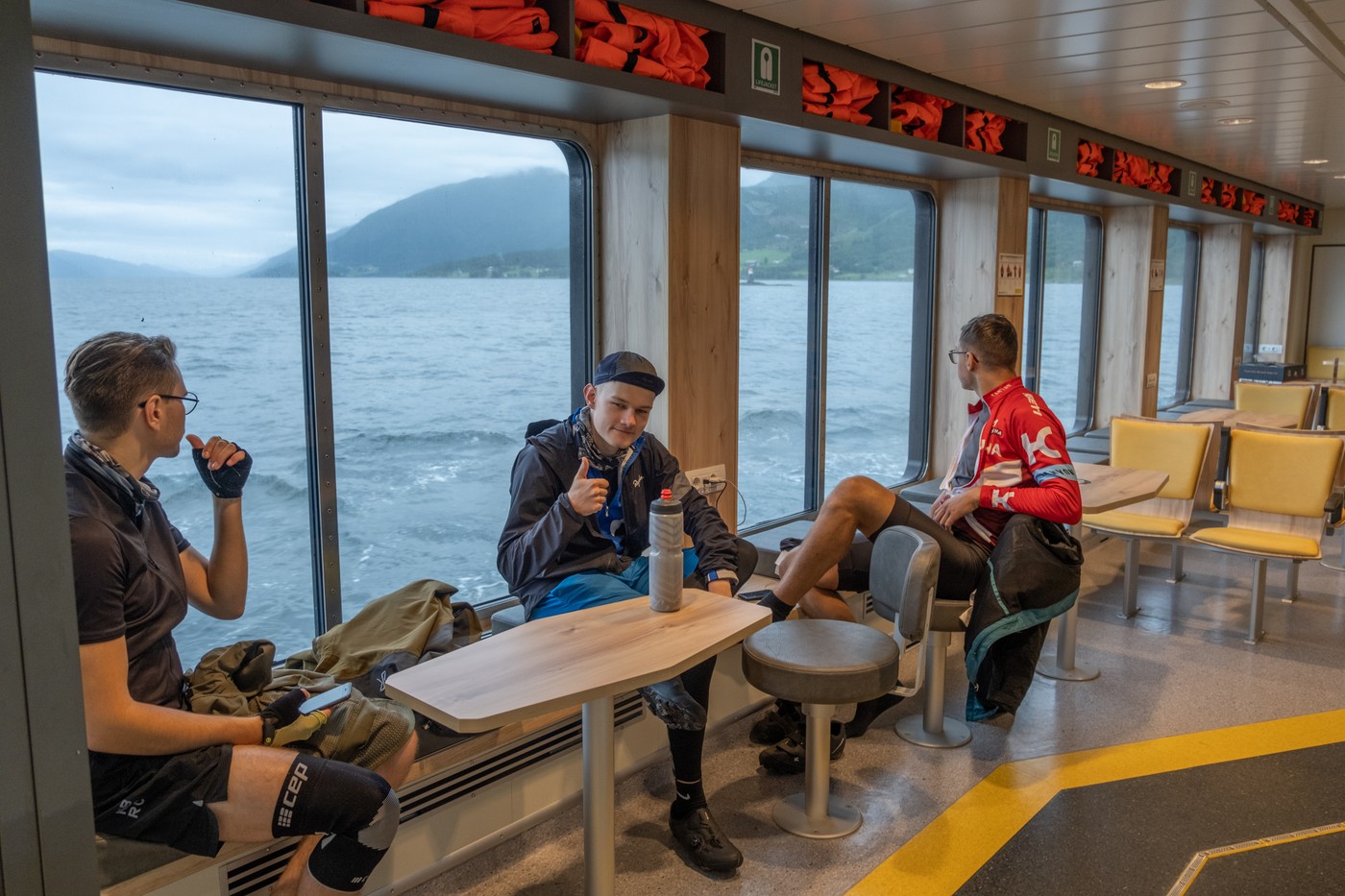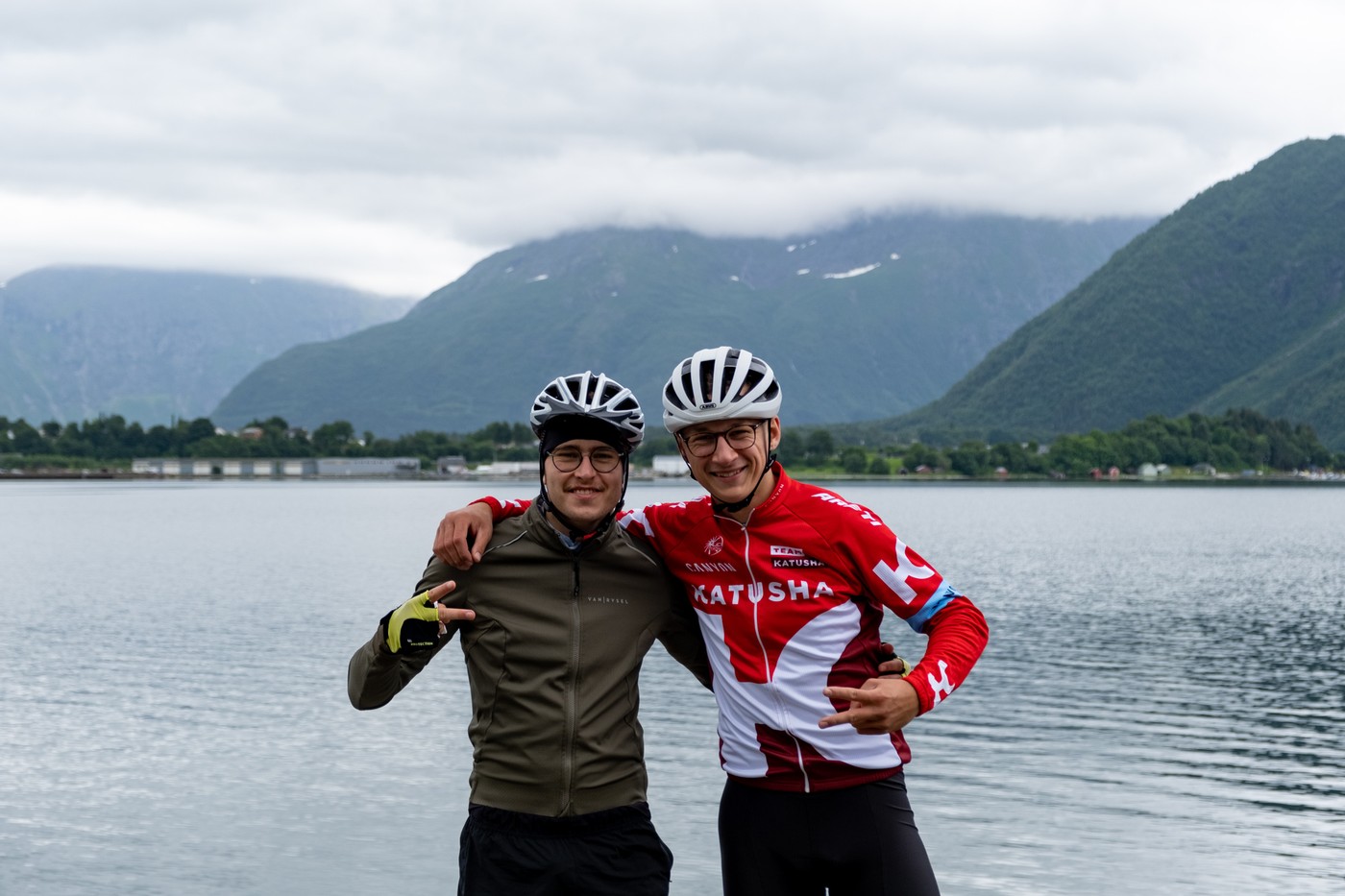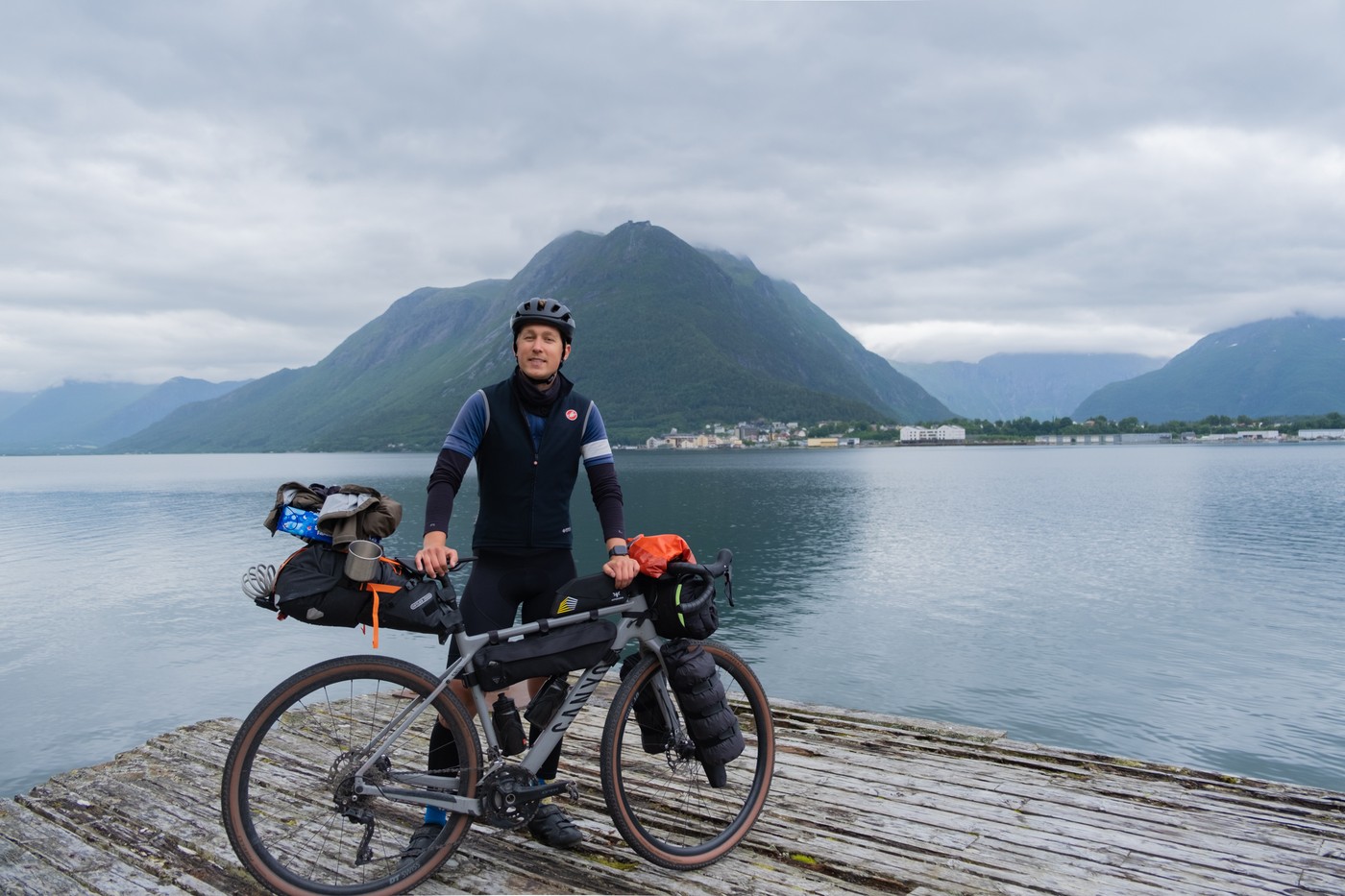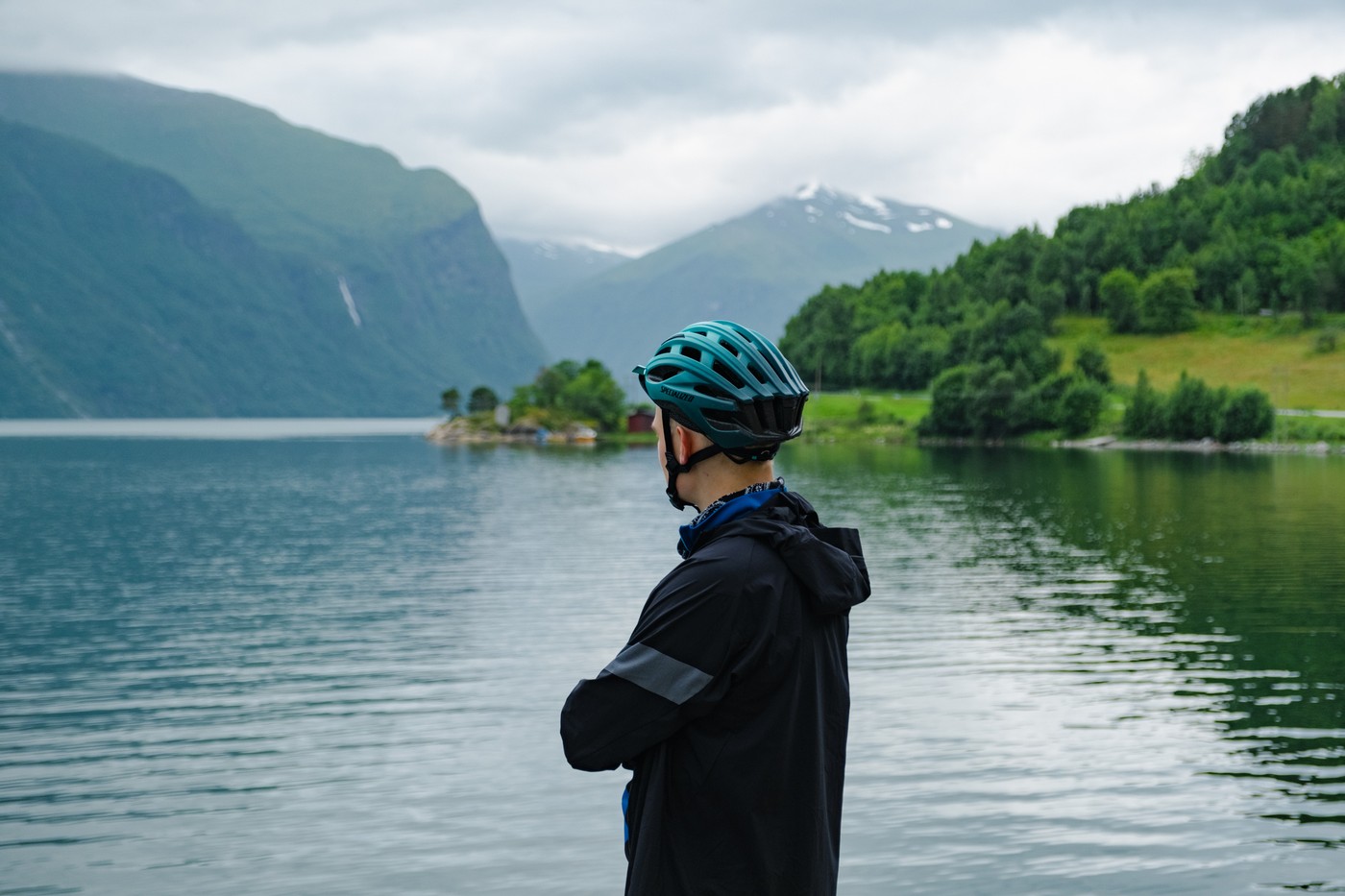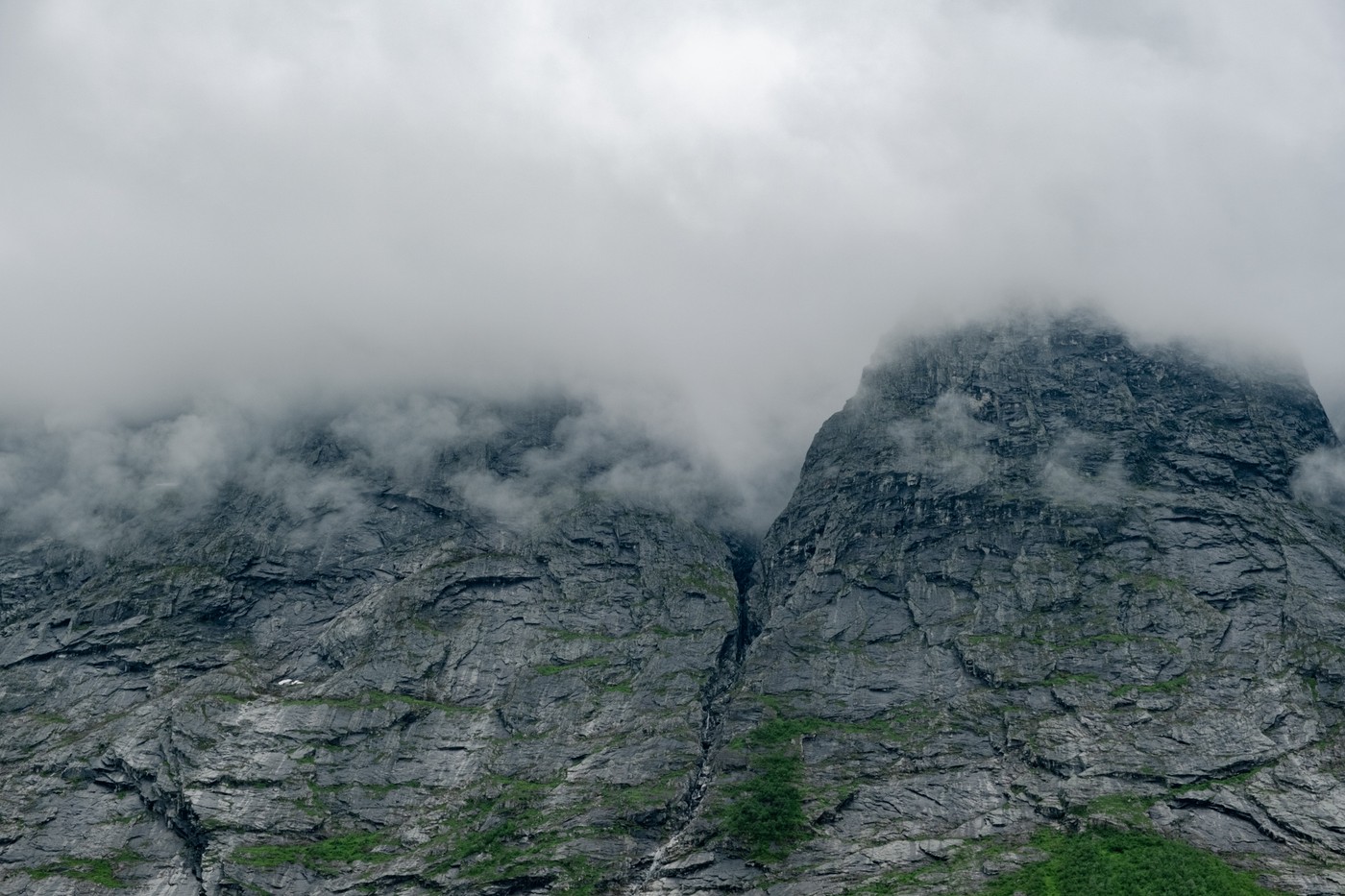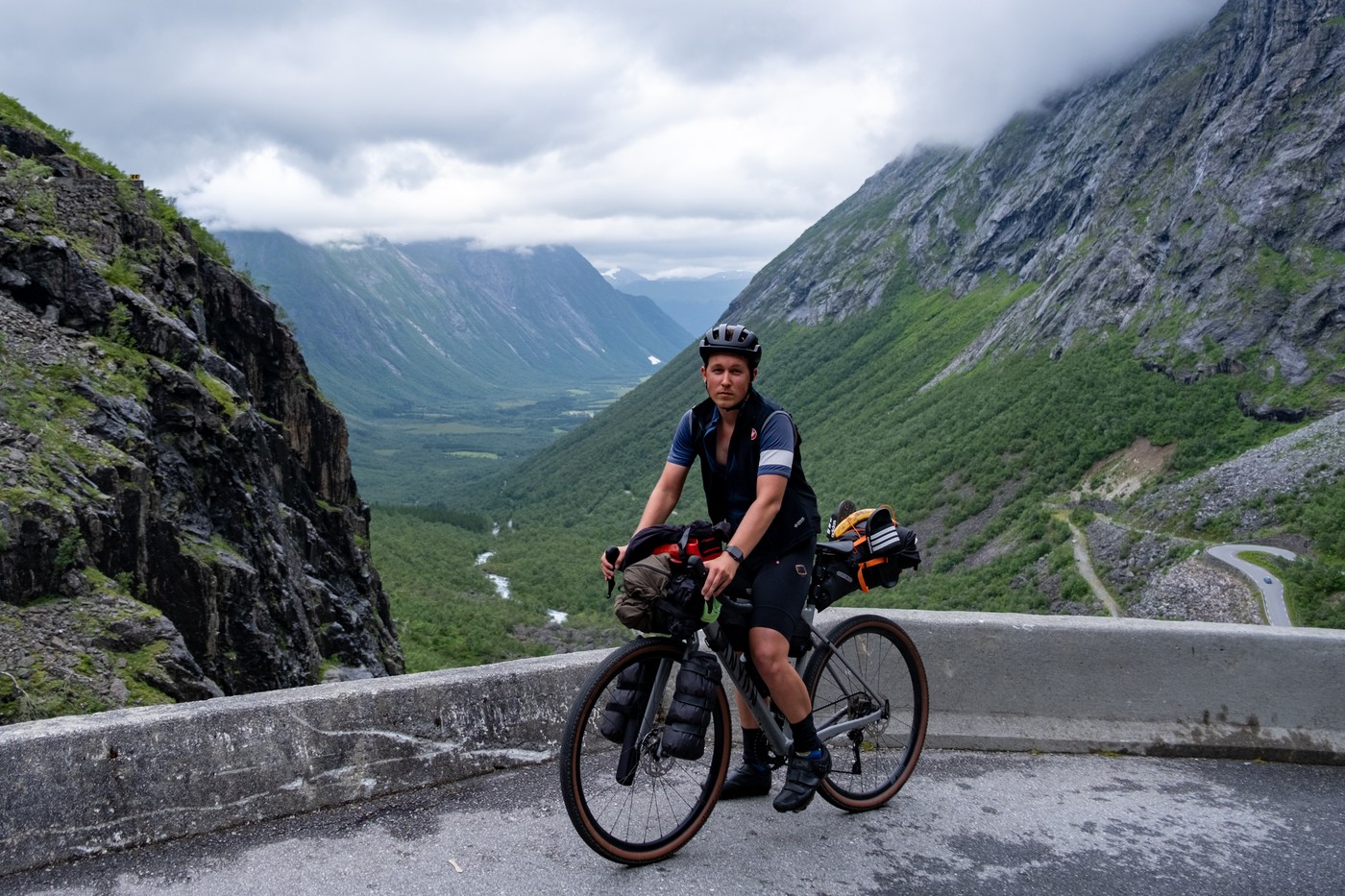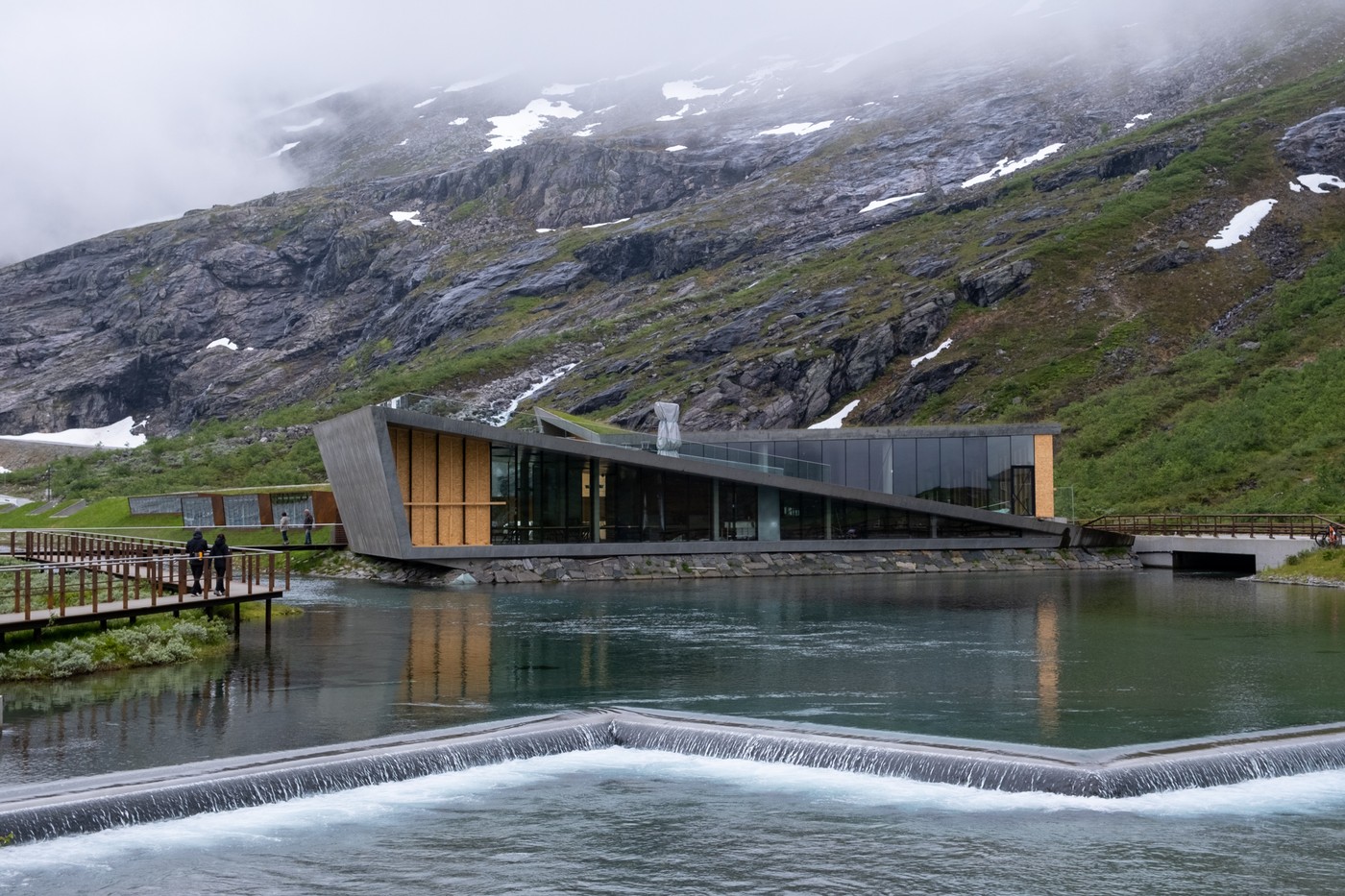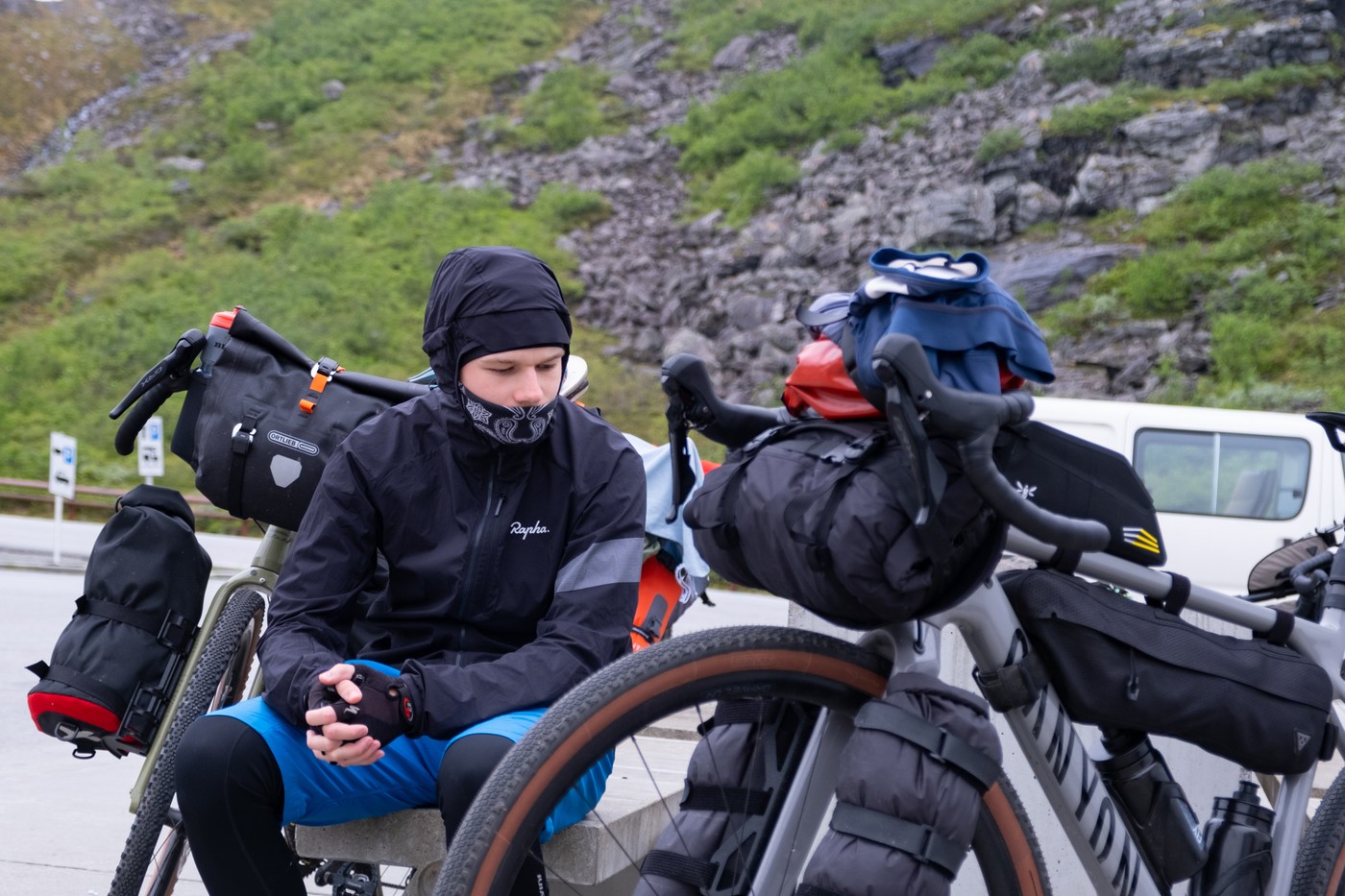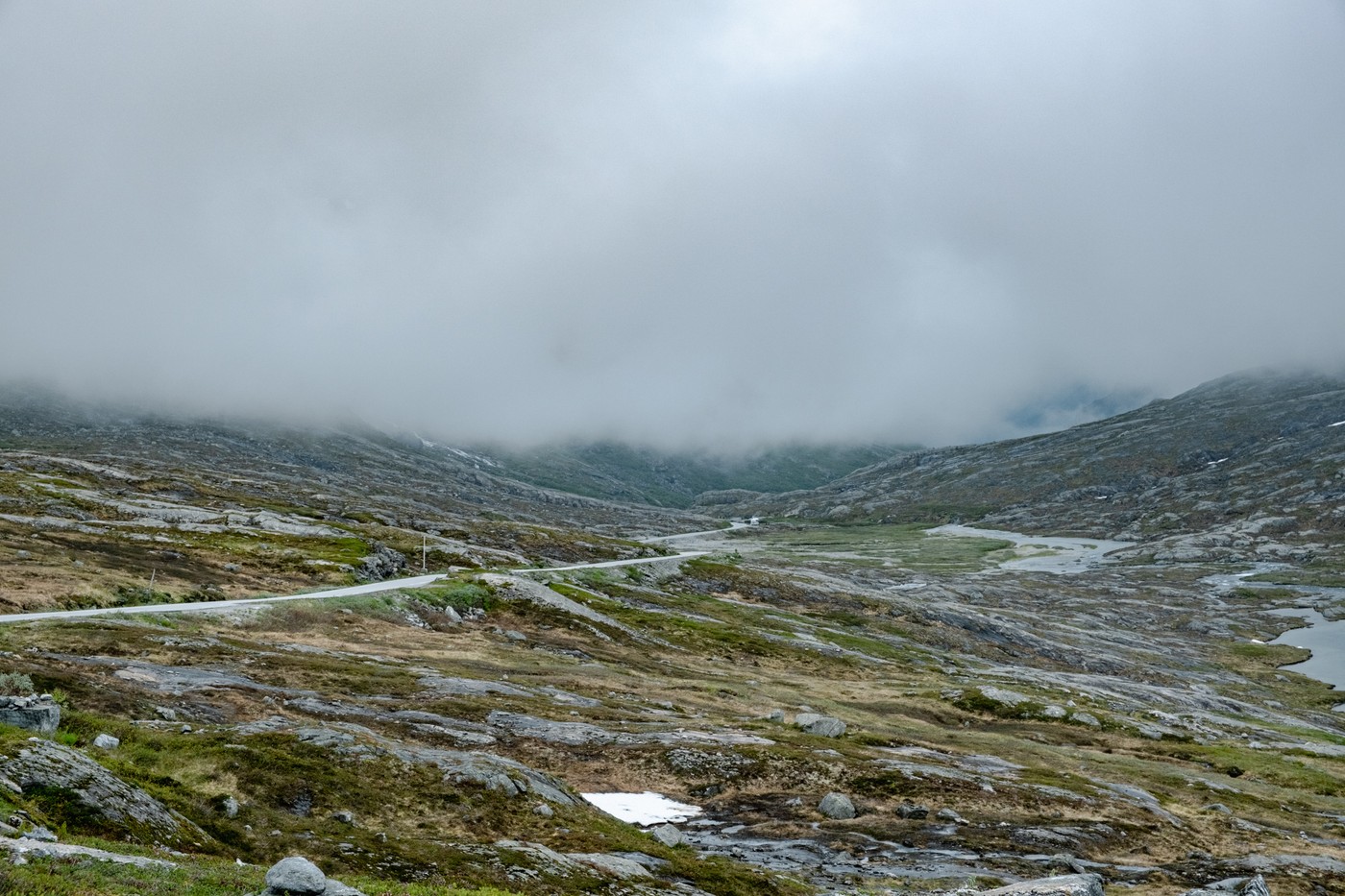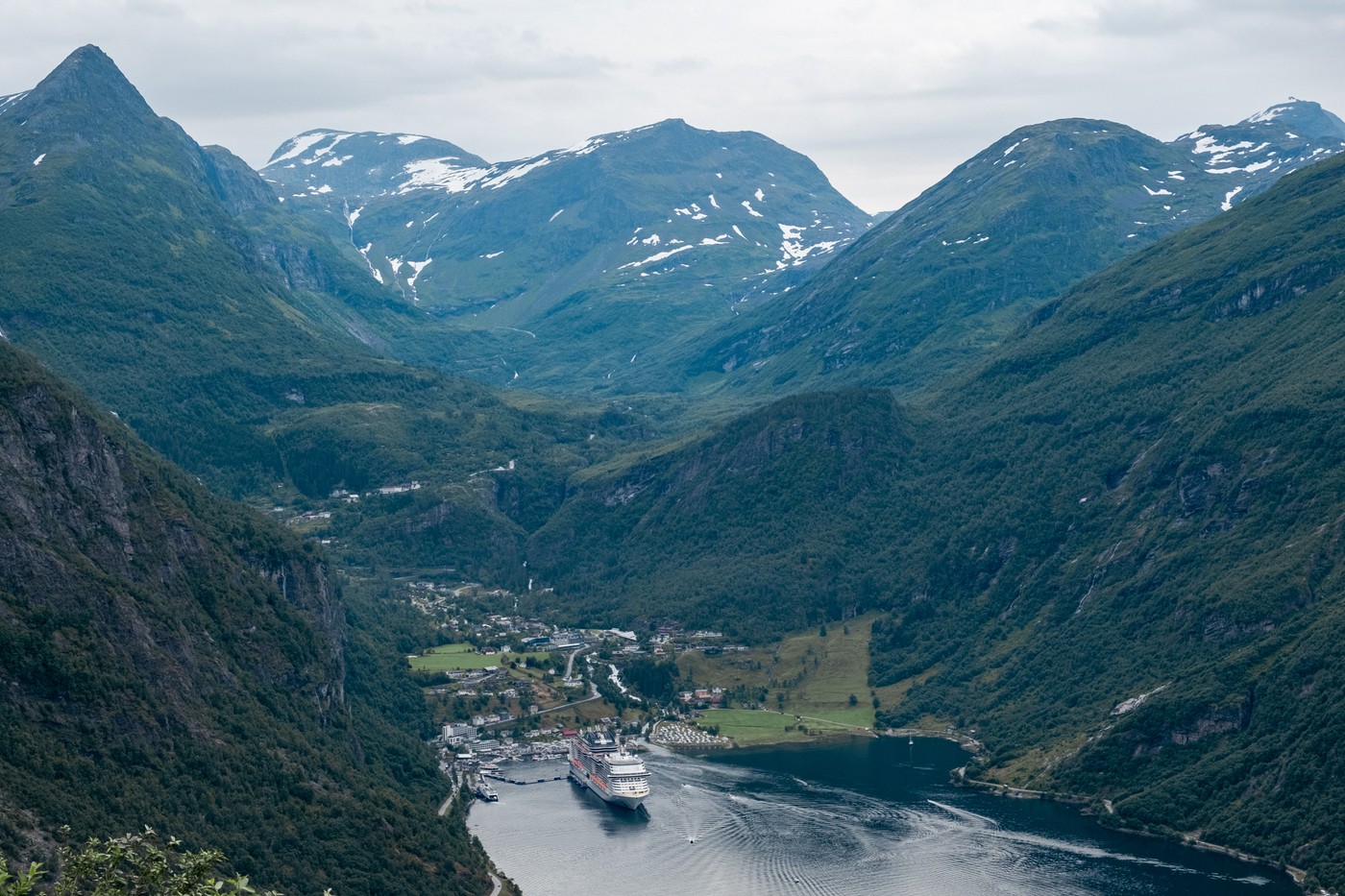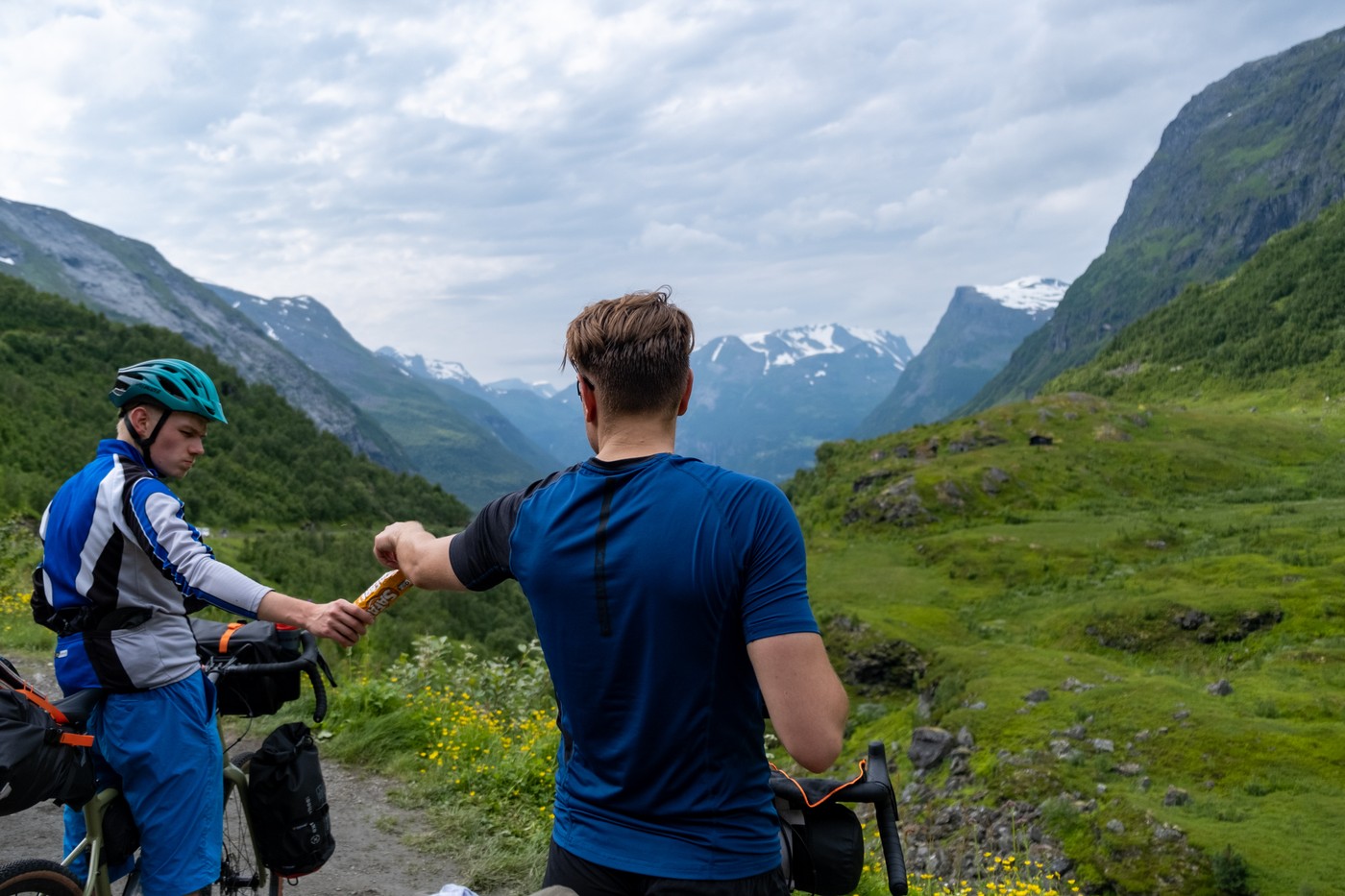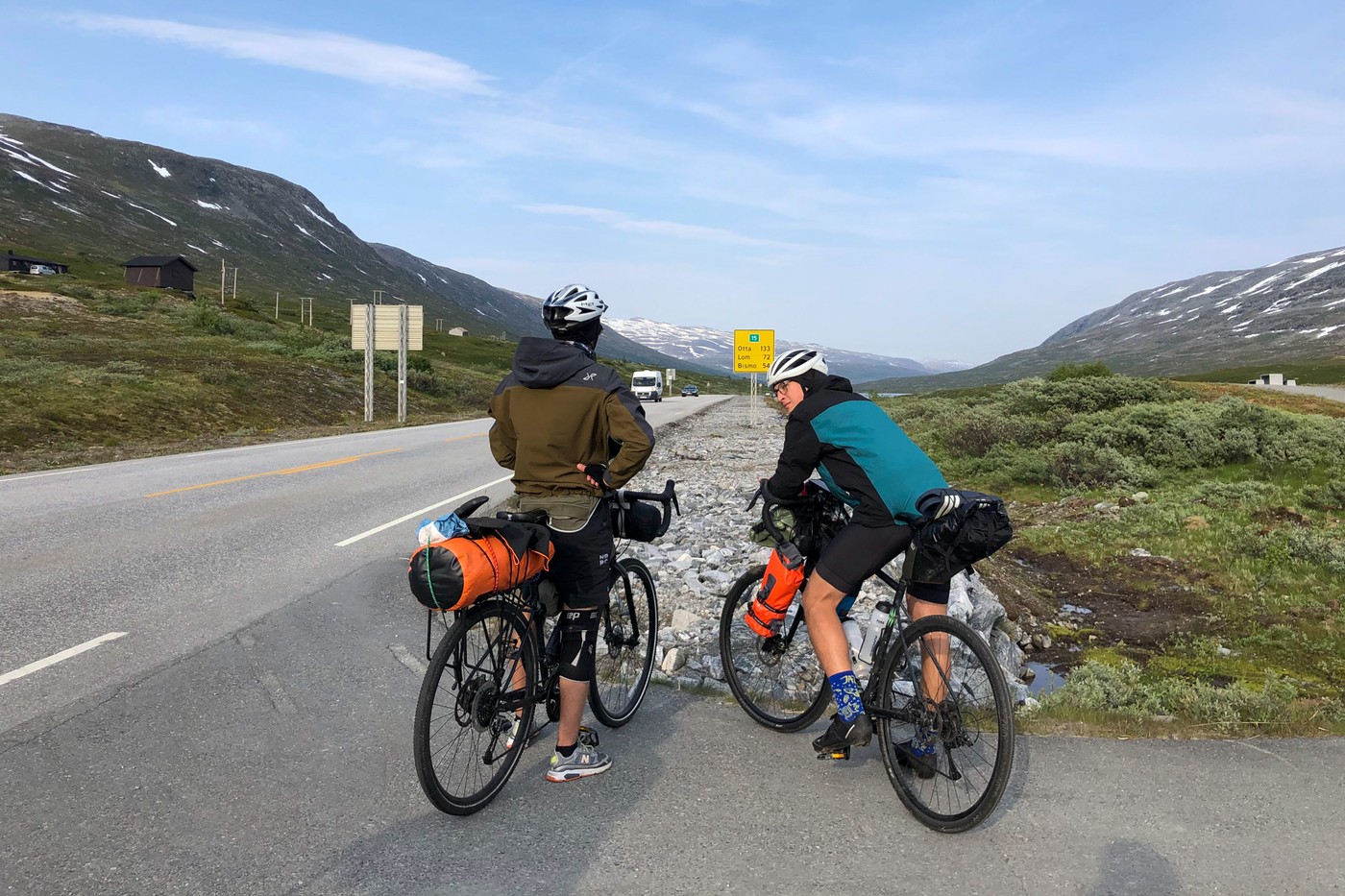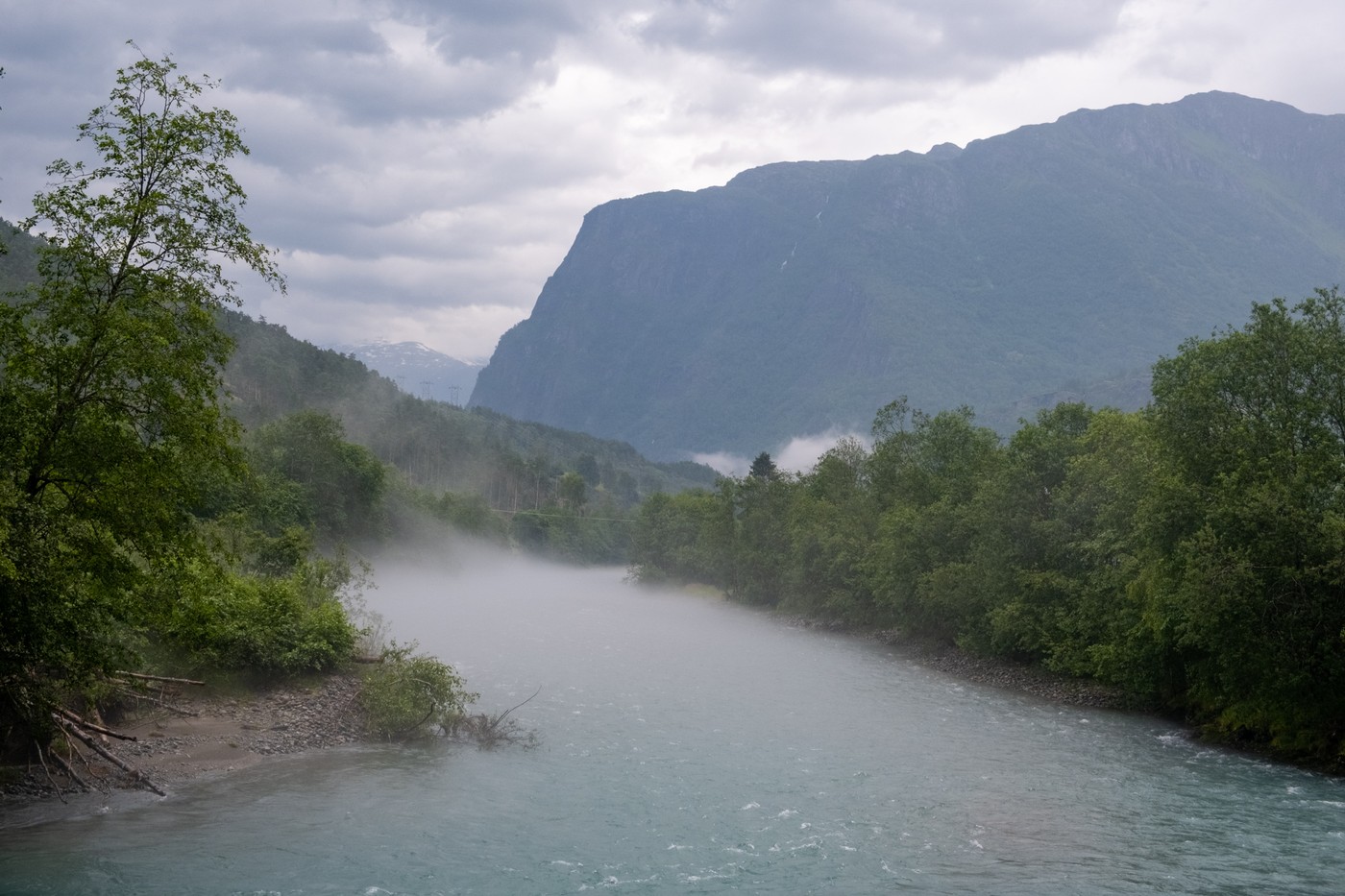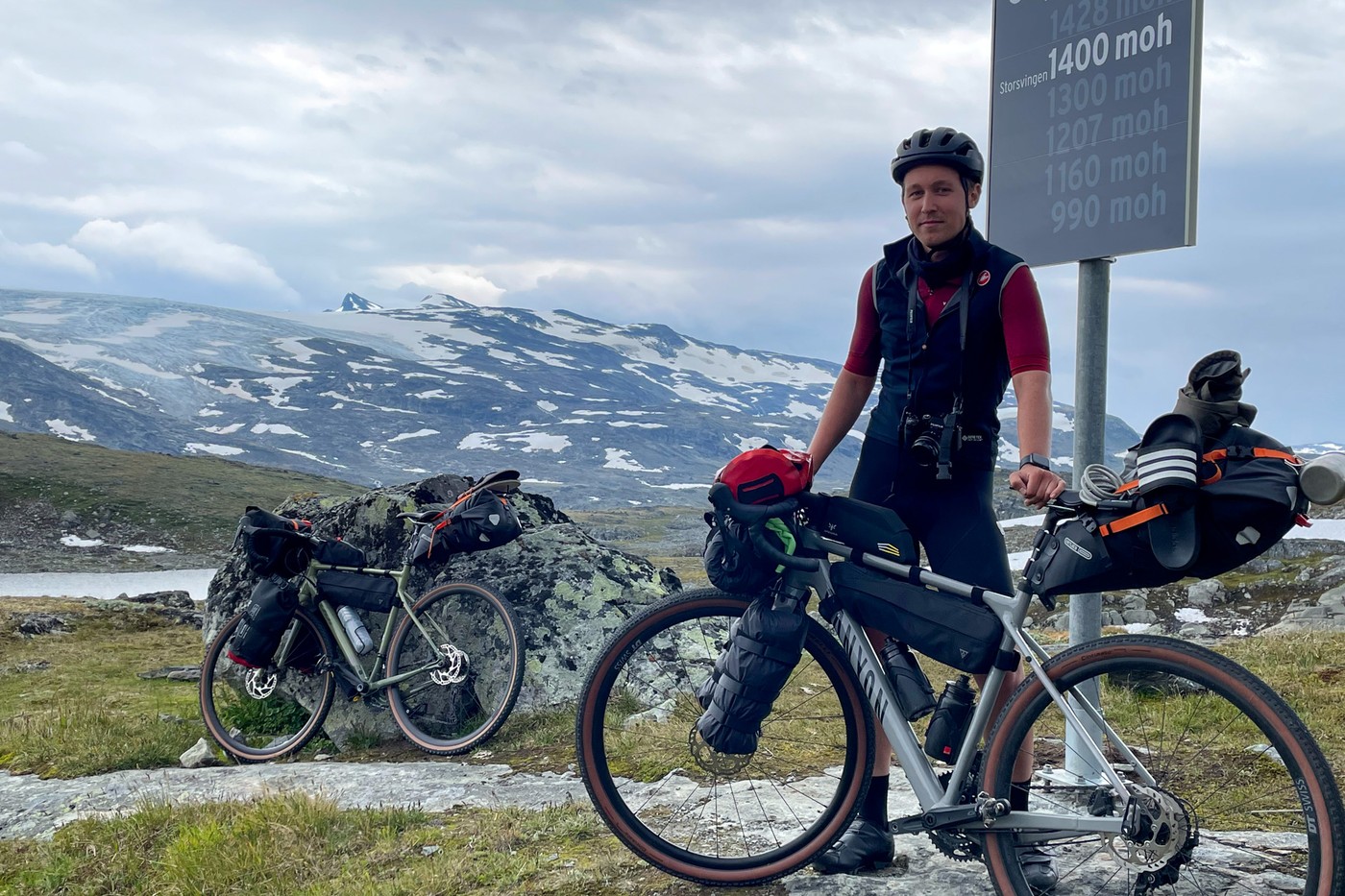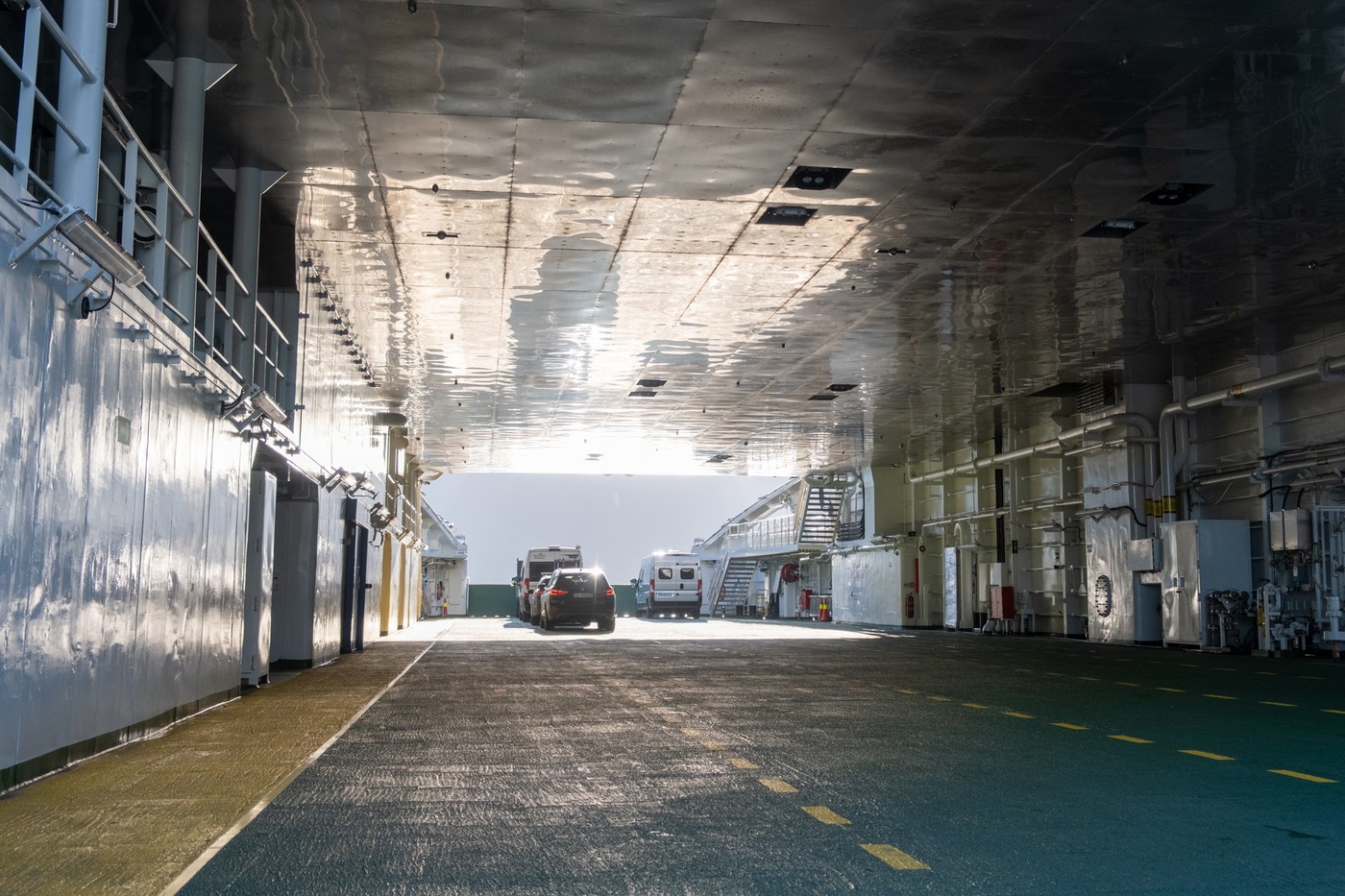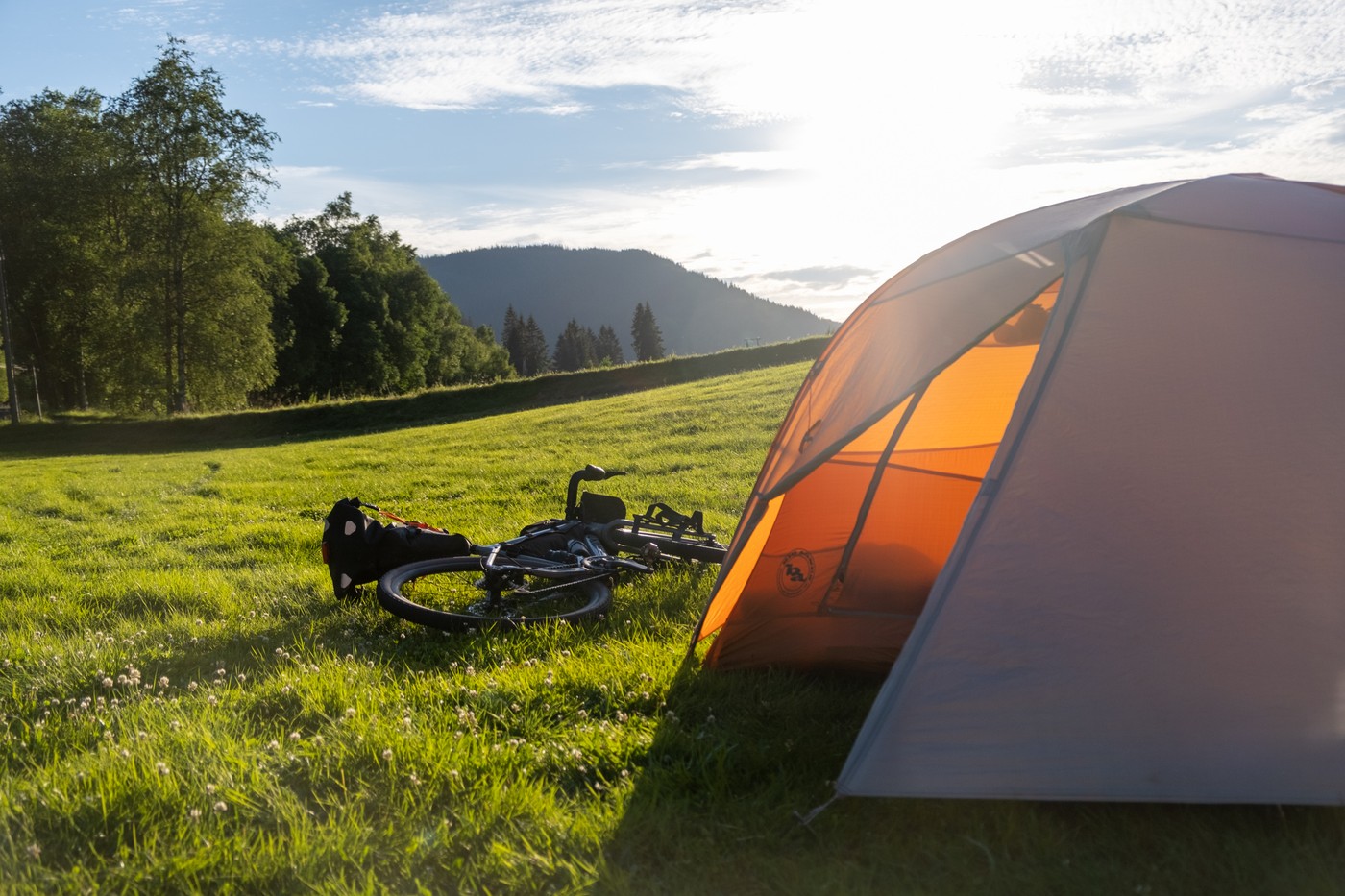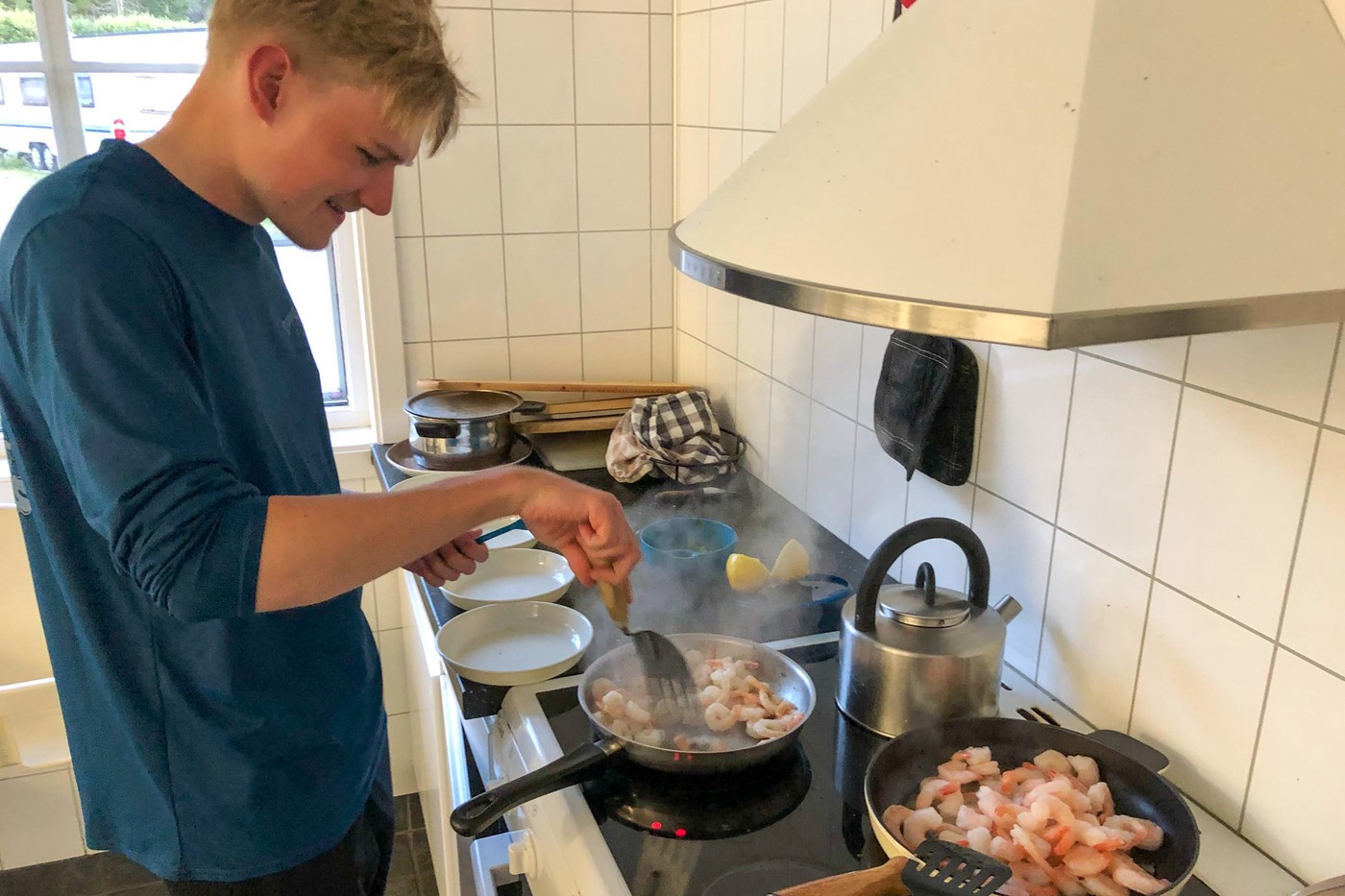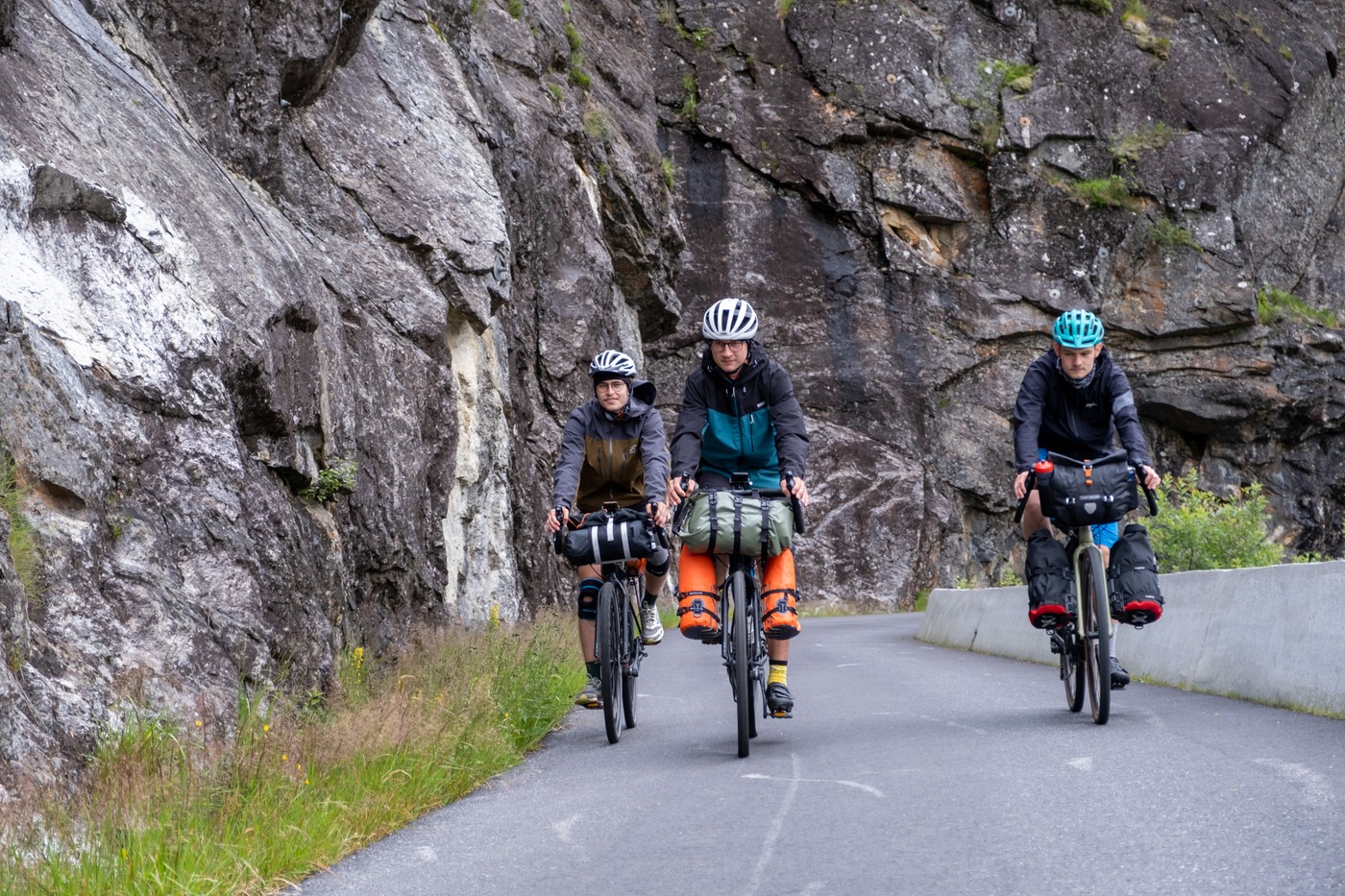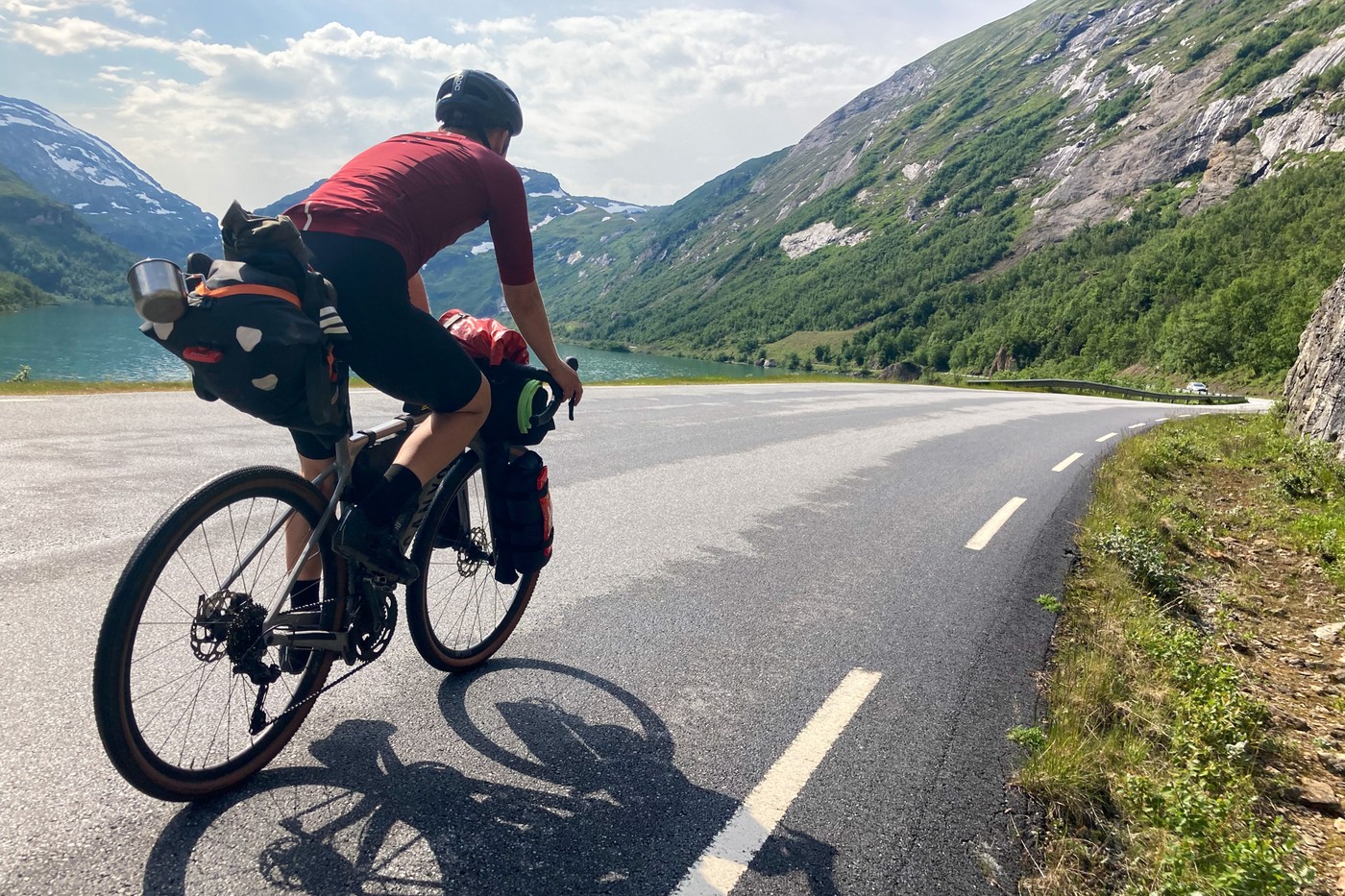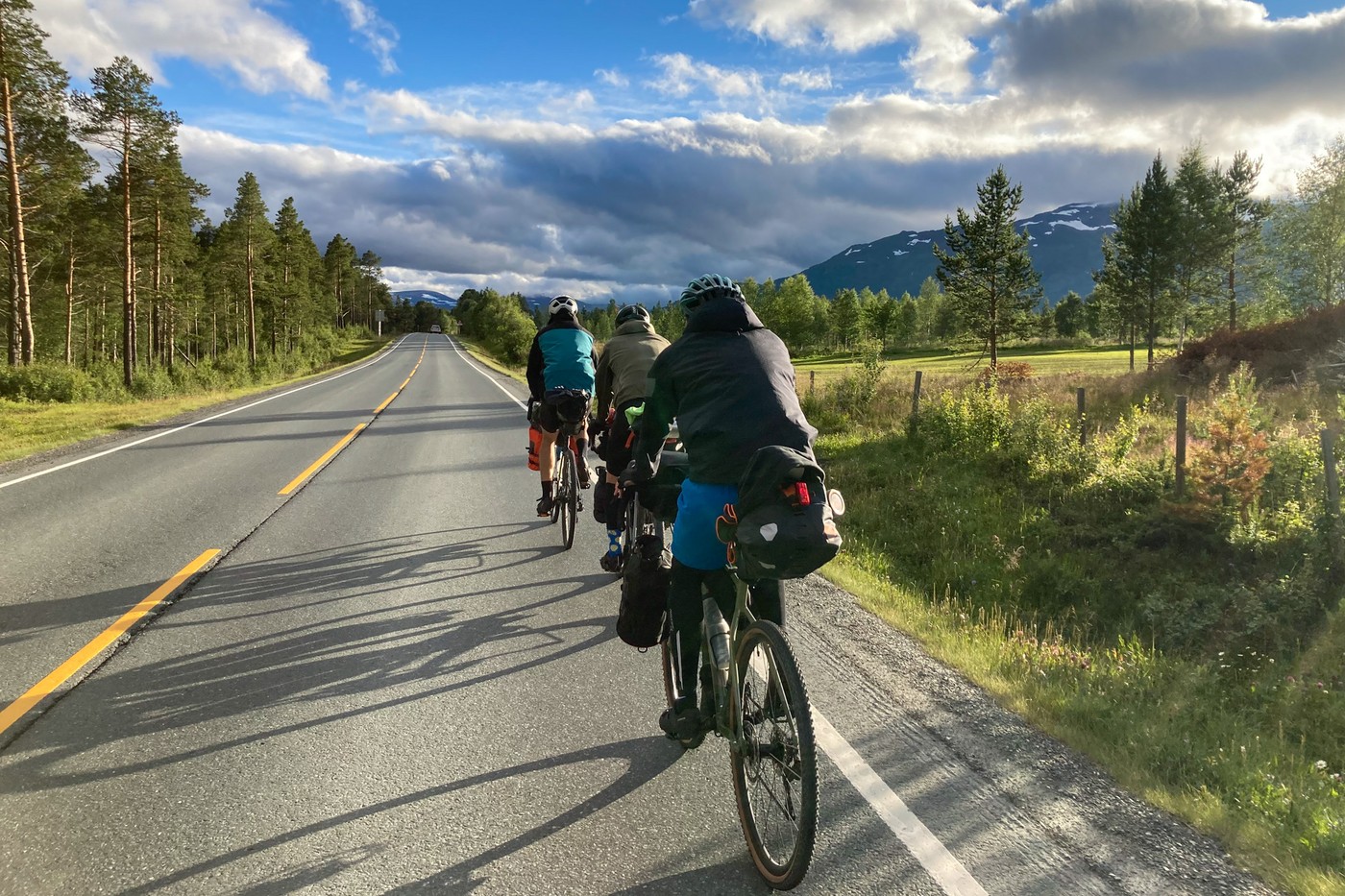Norway Bikepacking: Trondheim to Bergen
Blog
August 12, 2022 • ☕️☕️ 8 min read • 57
Pack light, travel far.
The motto of our journey. This year for the first time, we ditched rear racks and panniers in favour of a much lighter bikepacking setup. It paid off, as climbing from fjords, at sea level, to high mountain passes and glaciers suddenly became feasible. With an elevation gain of 14,000m, our journey was mostly about long uphills and rewarding views. Even seemingly flat segments would become zigzags when zooming in on the Komoot elevation profile. The weather was also a challenge. Packing so light, we had to carry everything we needed to cycle in the scorching sun, heavy rains or thunderstorms with snow lying around high up in the mountains.
This year, I packed a proper camera to capture moments from our adventure. Welcome to the coverage of our 2022 Norway bikepacking trip.
Norway Bikepacking Route

Bikepacking in Norway
- Distance: 930km
- Elevation: 14200m
- Time: 9 days
- Date: Jul 2022
We followed a segment of the Bikepacking Around Norway race (Komoot route). We started at Trondheim airport and had to cover 1000km and 14,000m of elevation gain to make it on time for our flight back from Bergen. The route led us along bike paths, remote roads and gravel sections. There were many uphills and downhills, and even when cycling around the fjords, we rarely had flat segments.
We’ve never had issues with tunnels as the race organizers checked that all tunnels have a cycling bypass or are cycling friendly. We heard stories from other bike packers that they had to take a lengthy diversion to avoid long tunnels where cycling is forbidden. During our trip, we discovered this tunnel map created by the bikepacking community. It can serve as a helpful reference when planning a route.
Some interesting spots on our route included Trollstigen - a famous serpentine road, Geirangerfjord and Sognefjellet - the highest mountain pass in Norway. On our way, we had four ferry crossings which are usually free of charge for cyclists.
Wildcamping in Norway
The freedom to stay and camp anywhere in nature is taken from the Everyman’s Right (Norwegian Allemannsretten). It is a customary right of everyone to enjoy nature regardless of ownership of the land. It’s permitted to wild camp for a maximum of 2 nights in the same spot, on uncultivated land and at least 150m from the nearest house.
During our trip, we had no problem finding wild camping spots. We camped in different locations, near lakes, fjords and forests.
Journey
Days 1-3: Norwegian climbing prelude
I could see forests, snow-topped peaks, lakes and immense masses of clouds through the cabin window as the plane descended towards Trondheim airport. Norway welcomed us with rain. It was only 13 degrees outside. A chilly temperature struck us as we exited the plane.
Upon arrival at the airport’s main hall with our bikes packed in boxes, we learned that nothing gets lost in nature. Other bikepackers approached us, asking us to reuse our cardboard boxes. They also shared stories and gave tips for our journey. The most helpful advice was to ditch Apple weather in favour of a local weather provider, yr.no, which works fantastic for that region.
Soon, we finished assembling our bikes, mounted the bags, and put on our warm, rainproof clothes. We were ready for the adventure to begin.
The first two days of the trip were the coldest. I was unhappy with my choice of leaving GoreTex gloves and winter leg warmers at home. It was windy, cold, with constant drizzle. We spent the first night wild-camping on a lake. The temperature dropped so low that I felt cold in my 0 degrees comfort sleeping bag. On the second day, we cycled up to Oppdal, a ski resort town. It was still chilly outside, but at least it stopped raining. Camping in the forest near the city allowed us to get breakfast from a local supermarket.
The constant cold weather worried me as we planned to climb high mountain passes. Luckily, on the third day of the journey, the weather got a bit better, and the weather forecast for the coming days improved. On our third night, we wild camp at Langfjorden with spectacular fjord views. It was a great spot to recover before coming days full of long climbs.
Days 4-7: Up, up, up
That was the most beautiful part of the trip. It finally became less rainy, and from time to time, we could even see the sun burst through the thick layer of clouds. Better weather made us start the most challenging part of our trip in a good mood. Four challenging climbs awaited us: Trollsteigen, then two uphills around Geirangerfjord, and finally Sognefjellet mountain pass, which took us to 1428m.
Another challenge was food. There were (surprisingly!) no grocery stores high up in the mountains. Carrying all the necessary food up the mountains was not feasible as we wanted to save weight during the climb, and also our bags were already packed to their limits. Therefore, after every climb, we still had to cycle an extra distance to reach an open grocery store down in the valley.
Trollstiegen
Trollstigen is one of the most visually stunning cycling climbs I’ve ever done. The climb starts at Romsdalsfjorden and sneaks up the dramatic, rocky mountainside to 870m. It has 11 famously sharp turns and the average gradient for the central part of the climb hovers around 8%.
Geiranger
To begin our main climb that day, we first had to reach Geiranger by Møllsbygda. It meant starting our day with 630m of uphill and steep descent to the Geirangerfjord. We took a short break in the village, and soon we were off to a 1000m climb that spanned almost 17km. With the surroundings created by the ice age, when glaciers carved out fjords and sculpted the high mountains, calling this route impressive is an understatement.
Sognefjellet
Sognefjellet is northern Europe’s highest mountain pass, reaching 1428m. It was a long 50km climb, starting in Lom. It took us almost 5 hours of cycling uphill to get to the top. Upon reaching the highest point on the road, we could see the glacier’s blue tongue. Fortunately, we snapped a few pictures at the top before the forecasted thunderstorms and heavy rain started. We were in luck - just 100m away, there was an excellent tourist shelter where we waited for almost 2 hours hoping for the weather to improve. Unfortunately, it didn’t, so we put on rain jackets and every warm layer we had and proceeded to a long, rainy and windy descent to Lustrafjorden.
Day 8-10: One more climb, and soon Bergen
The weather changed completely. Instead of cold and rain, we had to ride in scorching sun and heat. After passing the last 1000m “tooth” on the route elevation profile, we were done with substantial climbs and had a relatively flat segment to Bergen.
The rainiest city in Europe didn’t disappoint us. It rained for almost 100% of our time there. Looking for shelter, we entered a fish market next to the harbour. There we had a proper seafood feast and some beers.
On the last day of the trip, we cycled to Trek Bergen bike shop, as we had asked them to save cardboard bike boxes for us. They did it for free! We spent 2 hours disassembling and packing our bikes at the airport. We were heading home thinking about next year’s bikepacking adventure.
